#it's a show about cycles by its very structure
Explore tagged Tumblr posts
Text
Me, to my new date: doctor who thinks it's a sci-fi story because the Doctor thinks it's a sci-fi story and because the companions think it's a sci-fi story, but it's really just a story about ghosts. a story about an ancient creature carrying the ghosts of everyone they have ever loved, meeting new people, and seeing them only as future ghosts. they are haunted by the future and the past and the present because they are the only constant in a world constantly in flux, and they are running as fast as they can to things before they burn and fade to dust but everything will always end, you understand, because this is the only thing the Doctor understands and yet they keep going. they love too much to stop. doctor who is not science-fiction, it's horror and optimism and spiritual more than anything else, it's religious unto itself, the TARDIS is a haunted house and a church and a graveyard and a hospital and the Doctor is the most haunted being in the universe but more than anything, this is a love story, because how can you love something without being haunted by it- hey, what are you doing?
My date, shoving breadsticks in their purse: I have to go-
#more unhinged doctor who meta#doctor who#meta#*into a bullhorn* IT'S A GHOST STORY#ninth doctor#tenth doctor#eleventh doctor#doctor who meta#twelfth doctor#thirteenth doctor#it's abt the time war & dalek & the parting of the ways & doomsday & the last of the time lords & journey's end & angels take manhattan#it's about hell bent and death in heaven and the doctor falls and it takes you away and the woman who fell to earth#it's about the montage of all of the people the doctor has let down#it's about astrid peth and amy pond and rory williams and rose tyler and bill potts and clara oswald and grace o'brien#it's about gaps in memory and memories that live too long to ever heal#the doctor is a haunted house#it's a show about cycles by its very structure#the moment that regeneration became a mechanic for the writers to use and companions began to move out the doctor was DOOMED#but what makes them fascinating is that they see themselves as doomed and blessed at the same time#because they will never ever stop running#clara oswald#amy pond#rose tyler#bill potts#the ghosts are INEVITABLE
597 notes
·
View notes
Text
hey Rain World fans. I'm gonna show you a lore interpretation that I personally have never seen anyone talk about except myself. If you know me as Sliverist, then you know what's up.
Everyone knows the first five Karma glyphs represent the so-called Five Natural Urges. Violence, reproduction, trade and social connection, eating, and self preservation. People generally believe the next Karma glyphs before the tenth are meaningless, but this is WRONG. Understanding this revelation requires seeing the big picture, which I will guide you through.
Rain World really likes to blur the line between organic and inorganic, with the most obvious example being the Iterators themselves, these biomechanical superstructures whose function in large part is outsourced to their "microbe strata" (Purple SL pearl), but it goes even further, into the very world design.
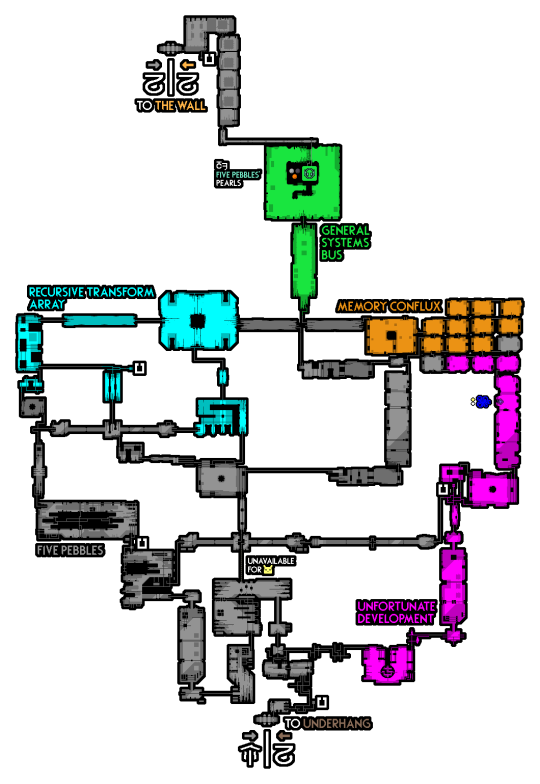

Five Pebbles' internal structure resembles a brain with its many sections all divided into specific regions with specific purposes. His chamber makes the resemblance even more obvious, where you can clearly see the brainstem.

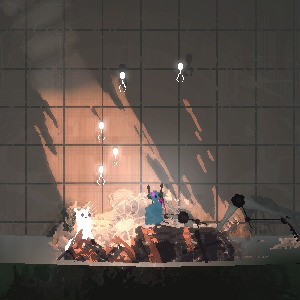
Within Five Pebbles' dark interior swim swarms of colorful neurons which turn white in broad daylight, each one a carrier of information. Often, they are brushed along by cilia lining the computer halls.
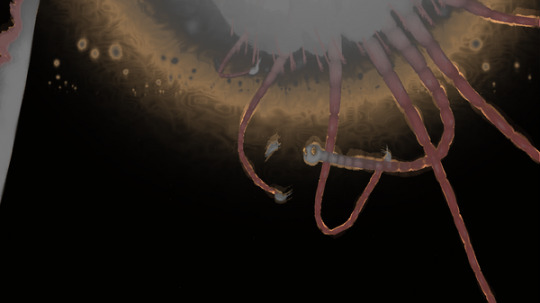

The Void Sea writhes with a swarm of beings enormous beyong reckoning which closely resemble real neurons. The void worm that takes interest in the slugcat uses a dendrite to make a tether to drag the slugcat to its final destination.

As the slugcat swims and swims, it is joined by countless many just like it, and together they swim toward the light, referred to in the code as "TheEgg" (VoidSeaScene.cs)

This is the table of Karma, showing every level above Five. Doesn't it look rather like..

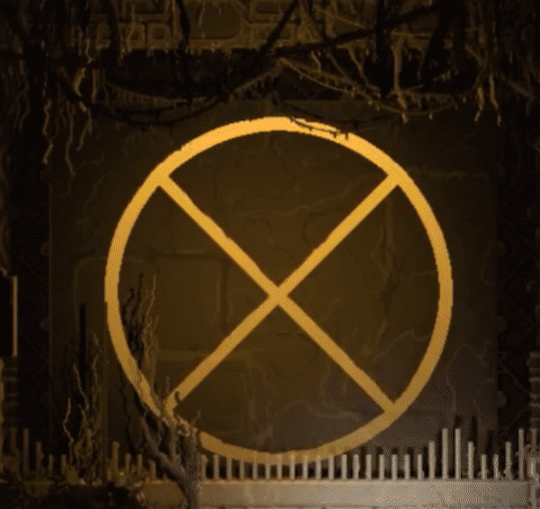
dividing cells being crossed out?
In Rain World, birth and life, cognition and enlightenment, death and ascension are all inextricably connected concepts. You might even say they're connected in a cycle. The imagery and themes are rich and complete, integrated fully into the world. This is even without mentioning the voidspawn which also resemble sperm, swimming to the same place. This is why Ascension is the best ending :artiyoy:
#kvetches#rain world#rain world lore#i could even argue that an iterator chamber or even structure somewhat resembles a womb. less closely than a brain but. hehe
1K notes
·
View notes
Text
Bill Cipher's anatomy UPDATE!
Alex Hirsch is going to kill me one day.
So, for those who don't know, I'm the weirdo who did speculative biology of Bill Cipher, mostly as a fun exercise. I'm a biologist after all.
And now, on the stream, Alex Hirsch brought me the unused Bill's anatomy drawing from his book. I lost my mind:
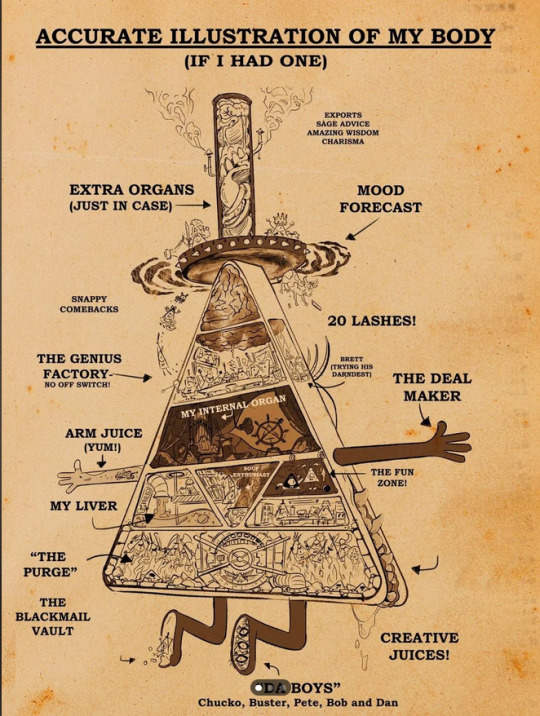
So, now, I can tell you what my spec bio got right and what I got wrong and I can expand on the anatomy a bit!
Btw, this is going to have a NSFW part. I am VERY serious about that. Also, warning for anatomy drawings I guess.
WHAT I GOT CORRECT:
Bill Cipher is an invertebrate! He has a hydroskeleton, which he calls "arm juice", not bones. SUCK ARM JUICE YOU PERSON WHO SENT ME THAT ASK, YOU KNOW WHO YOU ARE!
And he's also segmented, although he has more segments than I saw. This isn't unusual, internal structures often keep the segmentation that external structures lost. I was very correct about his exoskeleton splitting in the middle to form a front and back plate and that his limbs protrude through the gap.
His skin is black! It's funny how many people needed to tell me that he's wearing gloves. No he's not!
I accidentally got right that he has a liver. I thought "this dumbass eats and drinks so much shit, if he didn't have a liver he'd be dead by now" and I was right. Considering the size of his liver, I was also right about him being a carnivore (or mostly carnivore). Carnivores have large livers because livers are used to process proteins and for uric acid cycle. Since carnivores consume lots of protein, they need a large liver.
His stomach is in the center! I didn't explain on my previous post why I placed it there, but it actually makes a lot of sense. The center of an equilateral triangle is its "mass center", so if an animal looks like a triangle, it would make a lot of sense that its stomach would be there, so that the extra mass from the meal wouldn't tilt its balance.
I also got right that his intestines are in his lowest segment and his brain in the topmost.
WHAT I GOT WRONG:
The entire reproductive system. It's MUCH freakier than expected!
Bill has ears! They are on the sides of his head. They aren't really ears, just tympanal membranes. They are located where Brett is trying his darndest XD
The hat is probably not a part of Bill's body. He used it as storage for extra organs during Weirdmageddon, Holy Moses on a Motorbike! However, if it IS a part of his body, then it could be used as fat storage.
He has 20 lashes. I would have never guessed. They could still be used to sample scent, a lot of animals have scent sampling tentacles.
His feet! He probably has velcro-like structure on them, like geckos. This could mean that Bill could glue himself to walls and walk on them if he wanted to. Little insect motherfucker.
He has a singular anus! And it's between his legs. Do with that information what you want.
AAAAND UPDATES!
I can finally show you Bill's entire digestive system! I couldn't do that in my original post, since I couldn't figure out what would go after the small intestine. Alex Hirsch has cleared that up for me and also, I think Bill uses some form of Malpighian tubules-like structures for urine excretion.
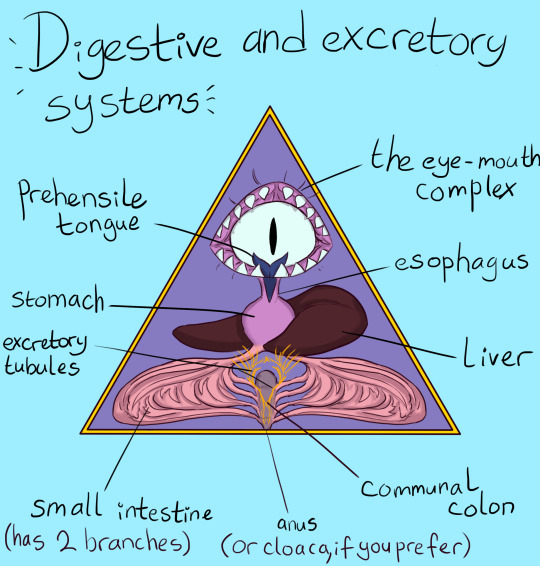
And, now... The reproductive system. AKA, the fun zone and creative juices.
NSFW!
Bill Cipher is a fucking freak, but maybe that isn't entirely his fault. It's in the genes of Euclydeans as species. (His love for BDSM isn't though. "He's got it all figured out", as Ford said.)
So, in case you don't know what a vagina dentata is, it was like an occult belief that women can grow teeth out of their vaginas. Bill Cipher's genitals look like a fucking vagina dentata. So that's why he thinks that teeth are hot - they grow out of his reproductive system.
Now, those aren't really teeth. They look like sharp-edged fleshy protrusions that Euclydeans probably use to tighten the grip during mating. It could probably be used for stimulation as well. That's why Bill doesn't like his sides being touched - the genitals are inside, but rubbing them feels violating.
Euclydeans are most likely one of those species who use pain to sexually stimulate their partners. It's not that uncommon on Earth either (don't look up reptile hemipenes, especially not turtles) and for creatures that are covered in smooth exoskeleton, some piercing action would be highly beneficial for transferring seminal fluid.
This also gives us the option of Bill Cipher being a biological female, who has a vagina with those weird teeth-like protrusions. However, it is entirely possible that males also have similar genitals. Bill calls his thing that's dripping "creative juice", so maybe it is seminal fluid? In either case, it's very freaky, but it fits him so well.
This also means that male Euclydeans most likely don't have a real copulatory organ, or, maybe, they do, but the female has to "bite it off" during mating to absorb the sperm. If they don't have the copulatory organ, they do it like birds, with just pumping, but unlike birds, they hold onto each other's thing with flesh teeth.
I am going to hell for making this art, but you are going with me for seeing it:

It also occurred to me that, since I believe Euclydeans use their bricks to produce sound... they would probably be loud. Fanfic authors, you know what to do.
@mitsu-the-witch you requested this, now live with it. I am going to burn my degree.
#i am going to hell and dragging all of you with me#speculative biology#bill cipher#the book of bill#stanford pines#gravity falls#billford#fan art#what biology studies do to a mf#kids get biology majors if you want to write smut fanfics with weird aliens#long post
426 notes
·
View notes
Text



Toxic romanticization of studying
In a word of introduction, my profile partly shows that studying and exploring is wonderful. But as a person involved in science*, I would like to show healthy and true patterns of this beautiful adventure in acquiring knowledge.
The inspiration for writing this post this time was not the phenomenon from Tumblr (although you can also observe it here), but from Pinterest. There you can come across cycles composed of quotes and photos whose aim is to motivate young girls to learn, succeed and get good grades. These images often also show examples of characters from movies, TV series or real life that you can aspire to be like. Overall, I have to agree that it really works! But I would like to draw attention to certain elements that need to be verified.
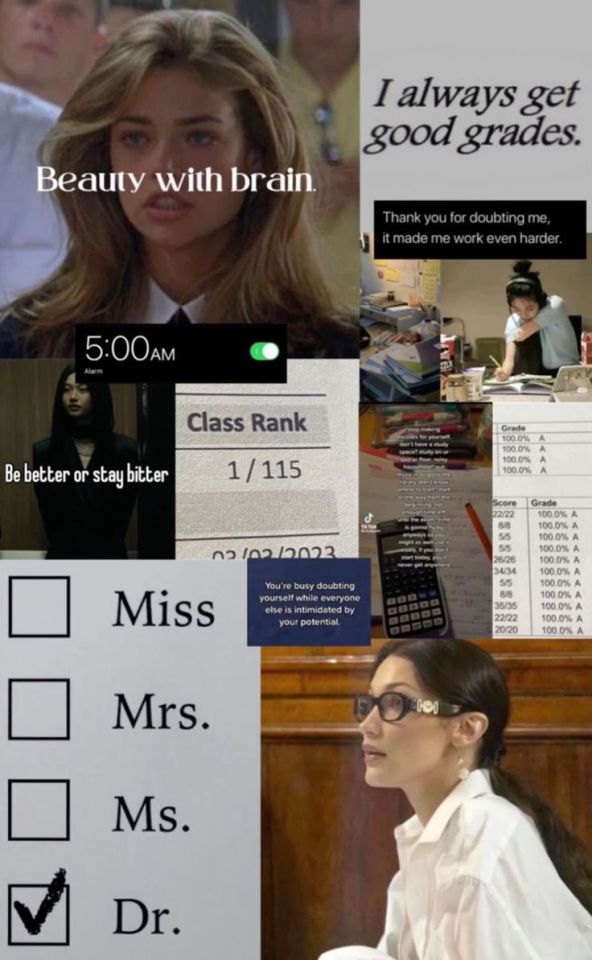

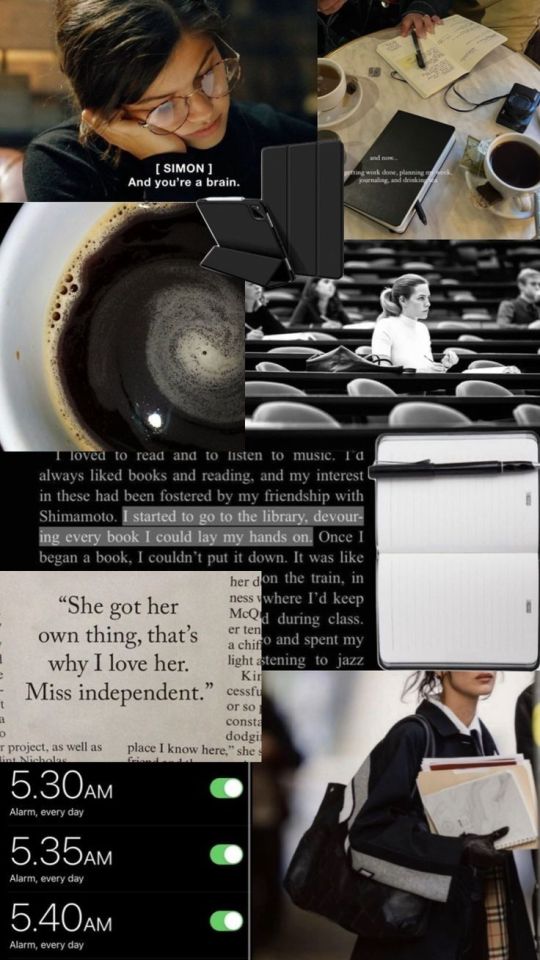
1. You shouldn't get up at 5am
First of all, the correct amount of sleep is one of the most important factors affecting the proper and effective functioning of our brain. During sleep, nerve cells regenerate, organize information acquired during the day and consolidate memory traces, which is directly related to learning. Lack of sleep increases impulsivity, deepens negative thinking and slows down the body's reaction time!
2. You can be a genius without good grades
Of course, good grades are a pleasant confirmation of our knowledge and praise for hard work. However, sometimes it is worth considering whether the structure of exams themselves, especially those with closed questions, affects the results. We often study for one specific exam, the knowledge of which may be very… limited and sometimes not useful, so it is worth prioritizing the topics that we study hard.
3. It's not cool to think you're better than others
We are different and have different priorities in life. It is also worth considering how many people escape from the rat race and start a slow, stress-free life. So we have to agree that judging people based on grades or responses under stress (sic!) is not cool.
The good thing about romanticizing studying
As I have already said, these types of collages are really motivating. So let's talk about what's great about them and what's worth highlighting and saving for later.

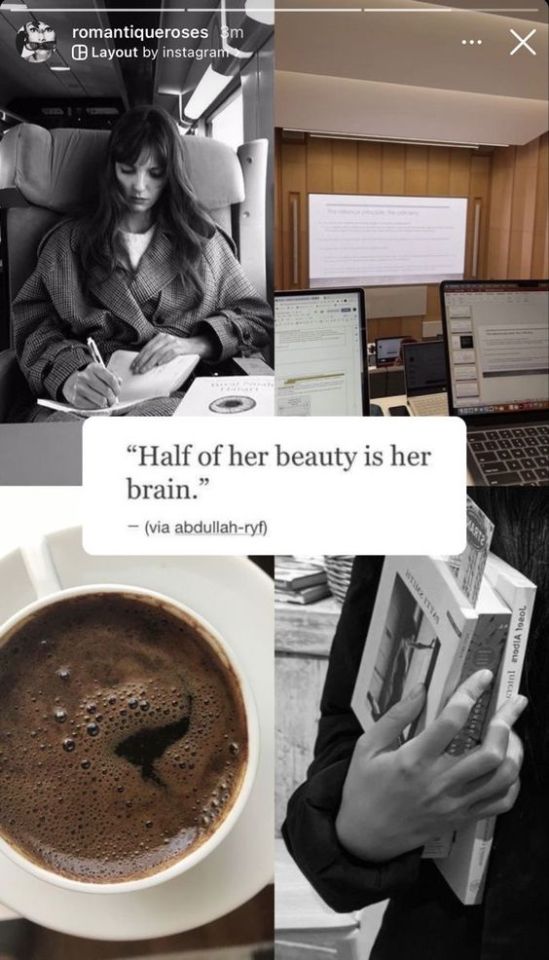

1. Knowledge is beautiful, but your outfit and surroundings can also be
We know that we should never judge a book by its cover, but… the issue of social perception painfully confirms that we do and will continue to do so because this is how our brains work. And isn't it nice when someone looks at us and thinks this girl is so classy?
Moreover, a nice outfit that makes us feel good gives us a lot of self-confidence. There are also many studies confirming the positive impact on motivation and concentration of a neat and aesthetic workplace.
2. Not just cramming, but also discovering
Broadening your horizons is easier with passion and real commitment. And to achieve this, the topics must really interest us. Not everyone has yet found something that they are extremely passionate about in science, so that is why you have to dig deeper and discover different areas.
3. Don't be afraid to use your knowledge in practice
Schools and universities, unfortunately, have their own rules and they do not always allow you to show your 100% potential. Thus, share your knowledge with others externally, write essays, blog and social media. This form of activity also makes you learn things faster and easier. In addition, contacts with others will expand your knowledge.
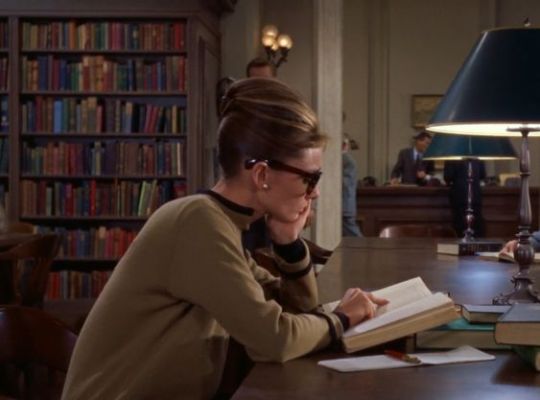
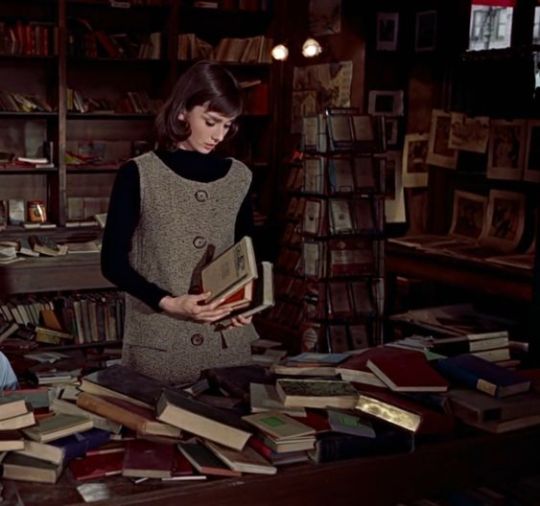
Therefore, I must say that it is worth choosing your inspirations carefully. Nothing helps you enjoy studying better than a clear head and lack of prejudices.
*This post was inspired by my own experience with studying. If anyone is interested, I think I can share my mistakes that did not help me in an academic adventure :)
#study aesthetic#healthy studying#study motivation#studyblr#dark academia#light academia#studyspo#study inspiration#study inspo#study blog#studying#productivitytips#studyblr community
916 notes
·
View notes
Text
From the moment we’re born, we’re brainwashed. Fairy tales, rom-coms, religious institutions, family expectations. They all whisper the same lie, that life culminates in marriage, in a white dress, in a house with a husband and three kids. That this is love. That this is fulfillment. That this is natural. That this is what YOU should want and it is what you need.
But if we are being serious, there’s no inherent reason for a man and a woman to be together. Heterosexuality isn’t some divine truth, it’s a construct, a tool of control, designed to uphold a patriarchal system that thrives on women’s subjugation. It’s the invisible leash that keeps people trapped, convincing them that their desires, their futures, their very selves must conform to a life of servitude, serving a man, birthing more people to serve more men.
Marriage at its core, is coercion. Not just socially, but historically and legally. It was never about love. It was about ownership, about ensuring women remained dependent, about securing lineage and property for men. Even today in its supposedly “evolved” form, it still reeks of that same expectation of monogamy as a duty, of reproduction as a requirement, of sacrificing personal identity for the “sanctity” of a bond that has always served men more than women.
And what about children? The world doesn’t need more of them. Antinatalism exposes the truth that procreation is not a moral duty but an ethical dilemma. We don’t owe the world more people, in fact, with the state of things, climate collapse, economic instability, rising fascism, we owe it to ourselves not to participate in the cycle of suffering. But of course the nuclear family needs its sacrifices. The system needs fresh bodies to keep capitalism alive. So we are pressured, manipulated, gaslit into thinking that having children is an inevitability rather than a choice, one we were never meant to question. If you cannot comprehend the concept of anti natalism you have to rethink your life, even my hardcore Muslim mother can understand it.
What about gay marriage? Same-sex marriage is a hard-fought and deeply meaningful right for many, it still exists within the larger framework of marriage as an institution of control. The fight for marriage equality wasn’t just about the right to marry, it should have also been about questioning why marriage is necessary for basic rights like stability, protection and legal recognition. Homosexuals have always found ways to build love, family and community outside of traditional structures and we deserve systems that honor those connections without forcing us to conform to an outdated institution. Love doesn’t need state validation to be real and the fact that marriage remains the ultimate legitimization of commitment shows just how deeply ingrained this illusion is.
None of this is inevitable. None of this is natural. It’s all a structure, a narrative forced upon us from birth. And if we can be programmed to believe in the heterosexual fairy tale, then we can unlearn it, reject it and build something better. Because we deserve more than the life we were told to settle for.
We must dismantle the patriarchy, tear down the institutions that keep us bound with patriarchy and males, we must build something that was never meant to serve men, but to serve us.
#anti patriarchy#radfemblr#radical feminist safe#patriarchy#pro misandry#anti sex industry#antireligion#feminism#marriage is a scam#marriage#marriage is coercion#smash the patriarchy#dismantle the patriarchy
191 notes
·
View notes
Text
The Shape of Monkey
EDIT 22/01/2025 @blackknight-kai has made some additional interesting observation about the shape of monkey and their fur placement with things that I previously missed, please check out her post for the details
xxx
Some of my friends were talking about the monkey design in Black Myth Wukong, in terms of how much of monkey features the DO/SWK has, and how we wished they devs added a bit more "monkey" ness to the DO, which then made me realize, the devs did do that, but just not for the "normal" game model that we use to play.
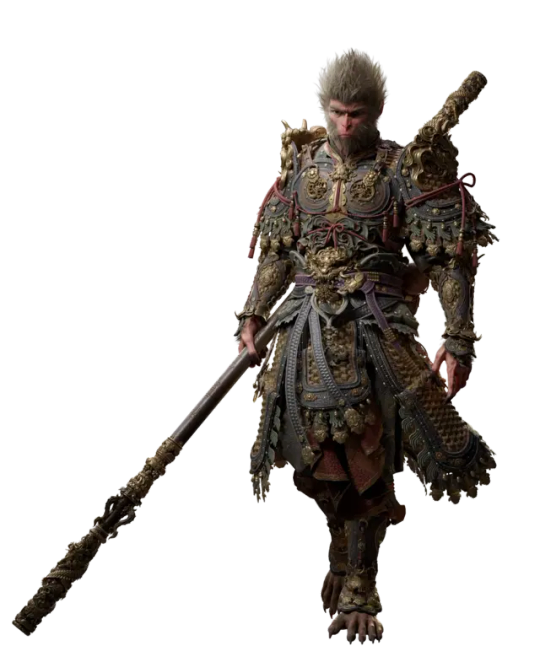
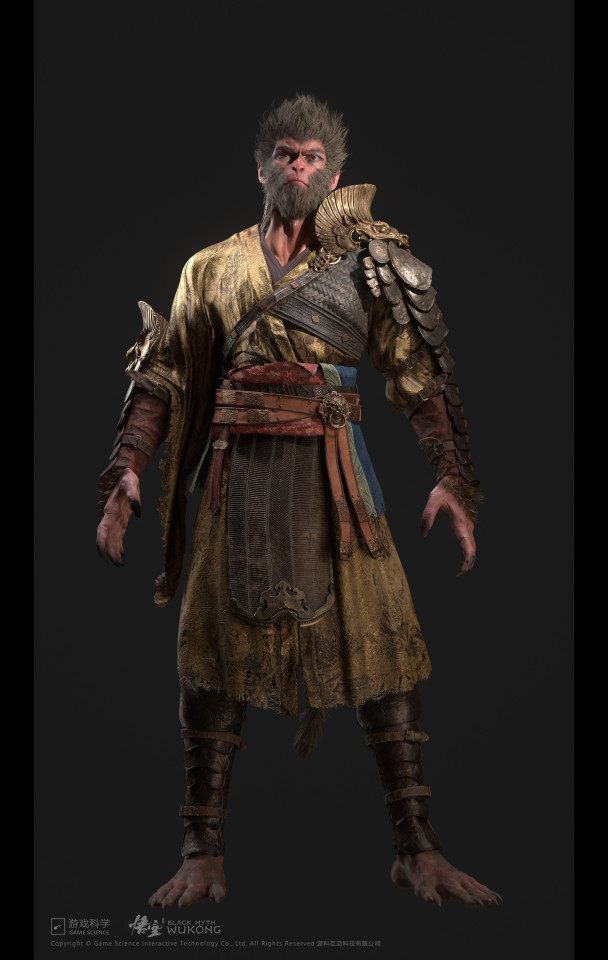
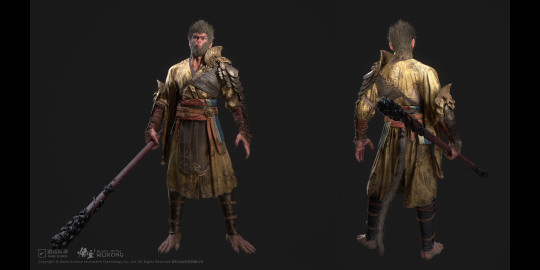
The anatomy here is pretty much very normal, the only few traits pointing at him being a monkey are his feet, tail, his face and his fur.
My friend (who doesn't even play BMW or knows about JTTW but is a certified monster fucker) said she doesn't count him as a monster because his shape is too human LOL
This is how he looks in Chapter 5 ending animation:
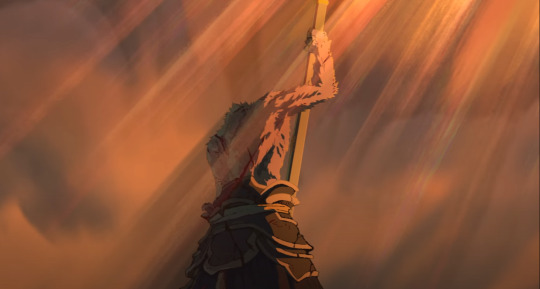

very human shaped.
which brings me back to the monkey that looks more like a monkey in the game
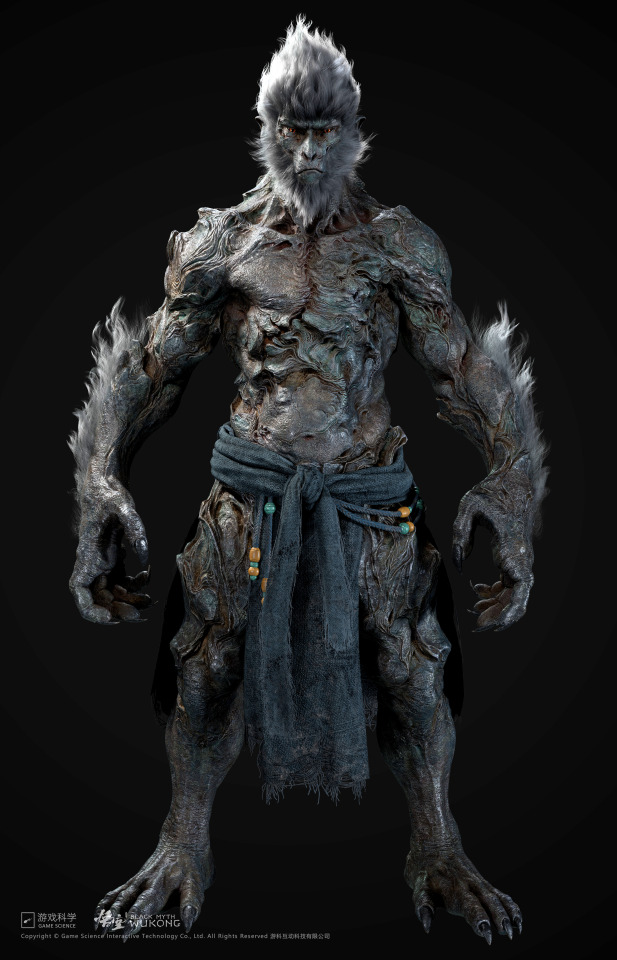
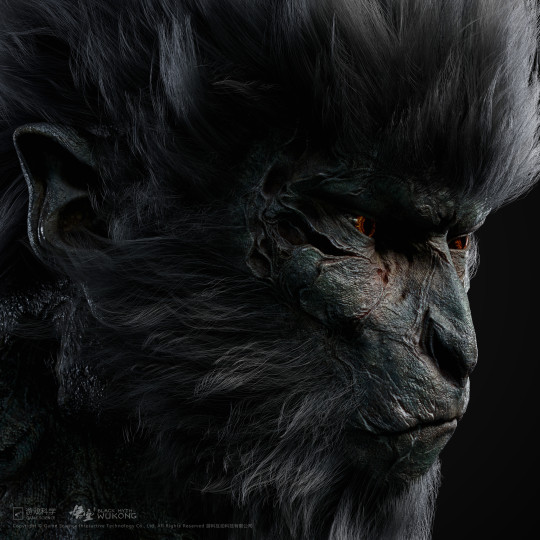
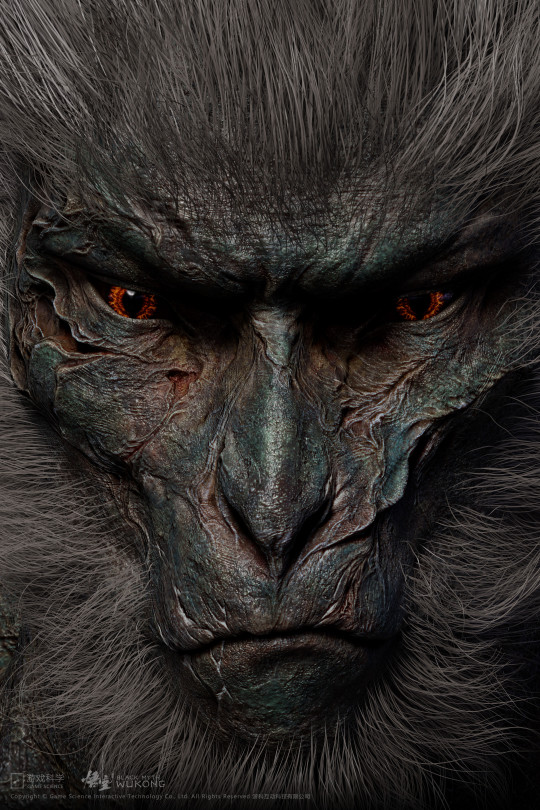
The Stone Monkey is a two phase we fight in the final boss battle, after we defeat him he breaks and out comes the Broken Shell of the Great Sage
After you finish the first playthrough, you get the Stone Monkey as a transformation, called the Azure Dome.
If you do the True Ending, you transform into the Azure Dome for the first time towering over monkeys and beat the shit out of the four heavenly kings and Erlang. Great fight 10/10
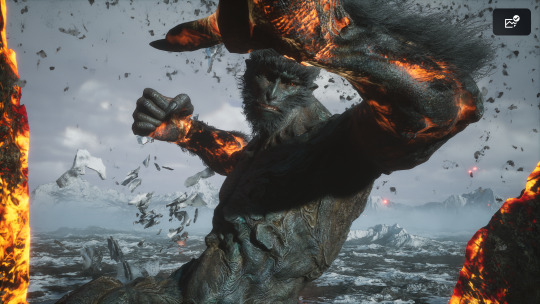

proprotionally speaking, his arms seems a bit longer, or least looks like it due to his big hands. His tails is also longer (don't have a screenshot of that unfortunately), and his ears are pointed. I also think that his mouth structure is a lot more monkey like with it being more pointed forward than his normal model.
Canonly, SWK can change his size into very big or very small, but I don't think in JTTW it was ever described that he had a Stone Monkey form. He is a stone monkey, or monkey born from stone.
I really love that the devs took it literal and created a form and transformation that looks like a monkey and you can see from his tecture that he is supposed to be made from stone
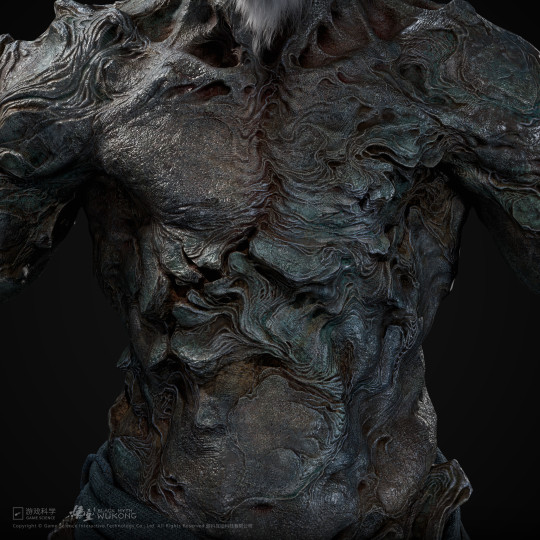
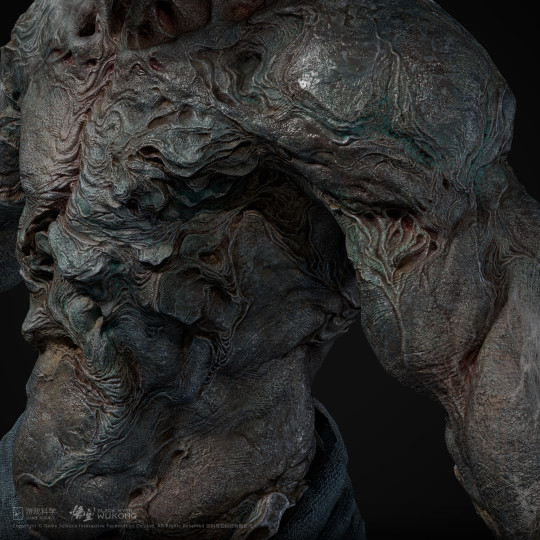
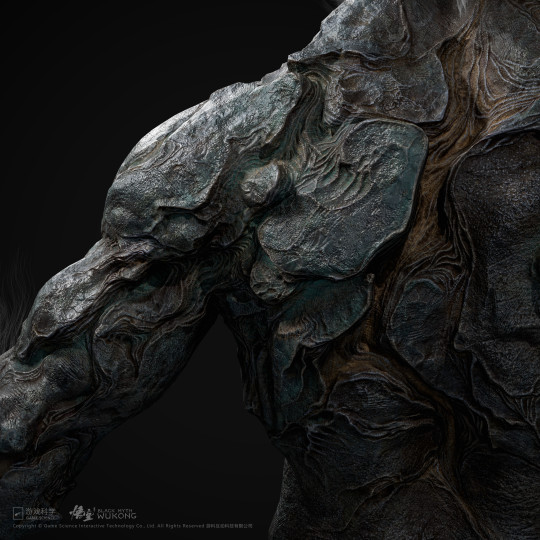
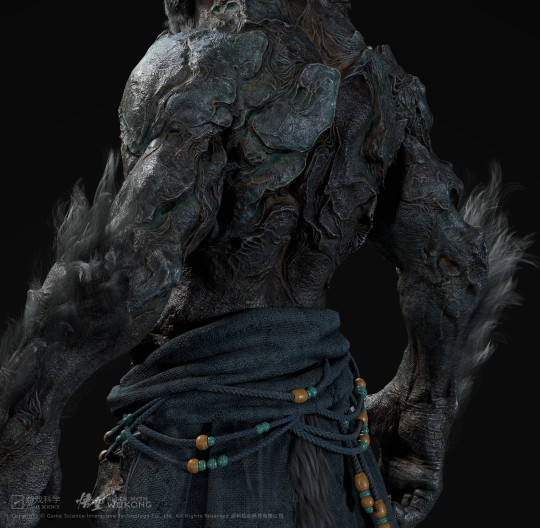
He punches people and also when he dodges he walks on all four. So I guess that is the closest to a monkey we will get from DO/SWK
Chapter 6 ending animation also goes with a more "monkey" like anatomy for Wukong's design
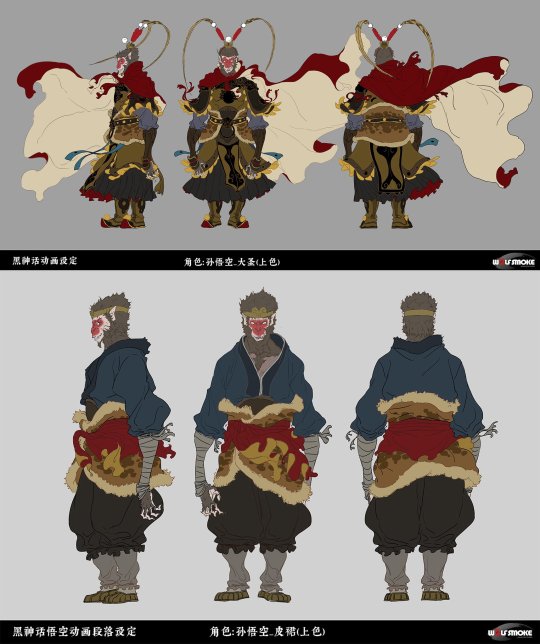
point ears, longer limbs, shorter legs. I love that they added the red face blush here too. His tail is never shown in the animation, but looking at his pilgrim outfit set and the pulge in his pants (no not that one), he probably hides his tail inside his pants. it's kind of a cute detail
The Old Monkey we see also has more human like proportions:



all the other monkeys in the background (beside DO) are more monkey.
Here are the models I pulled from the game
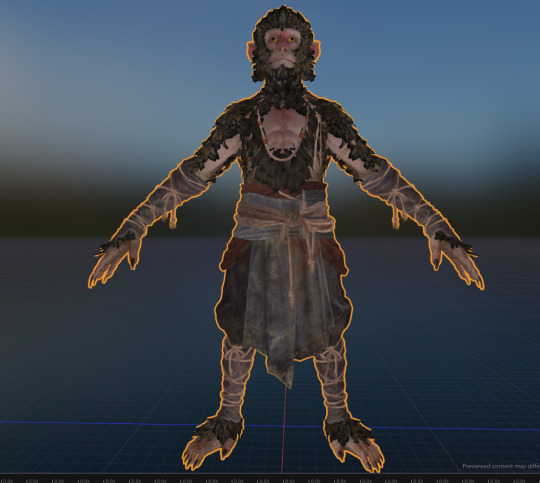



I also love that each monkey has a different fur "pattern", gives them more variety
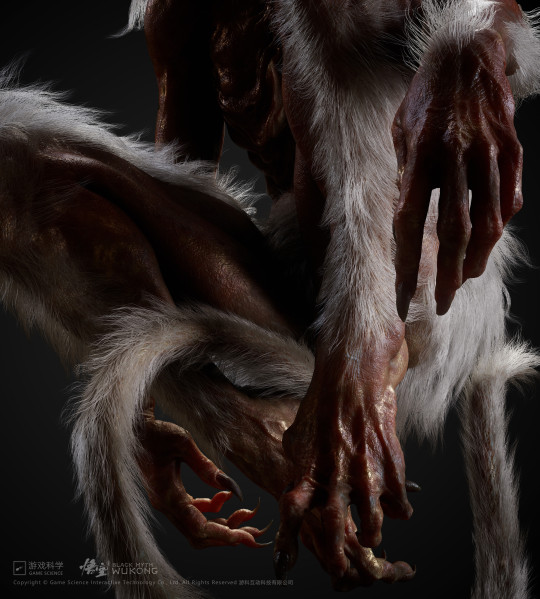
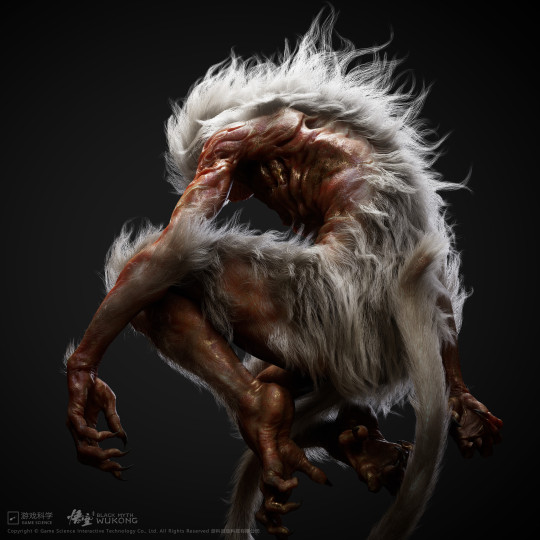
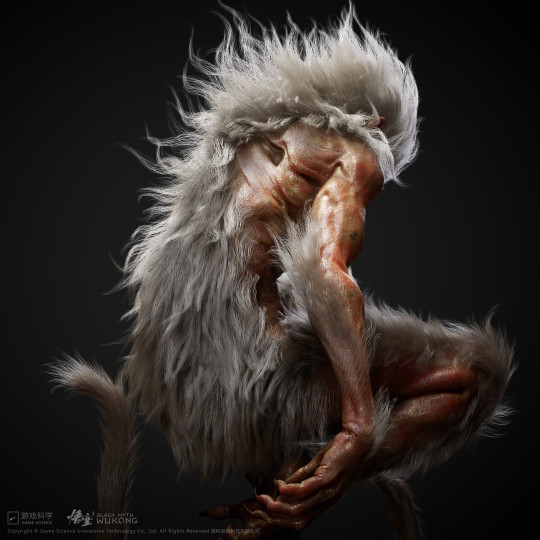
This one we only see when you reach the normal ending, when the DO did not break the cycle and the headband is put back onto his head, we see this monkey in the fetal position and then it zooms out to the stone egg and sad credit song plays. You can watch the clip here.
I think it's clear that the devs are trying to show an unbron monkey still in the womb, the stone egg/birth stone being the womb in this case, waiting for the next DO to come and finish SWK's revival.
I guess the stages of growth could be like this:



Why did Game Science went for a more human-like approach for the Monkey in terms of design?
We don't know the answer, it was never mentioned anything in the game about it and I have not come across any interviews about it yet.
I do think that the choice to make the Stone Monkey more monkey like and the "normal" monkey more human like was a deliberate choice by the devs.
For the animation, I believe the Game science gave the studio some references on "hey this is how our monkey looks like" and then let the studio do its own thing style-wise, hence why in Ch. 5 animation monkey has a more human like anatomy but ch. 6 comes with more monkey like anatomy
My personal HC is that SWK has a more human-like anatomy to show that he has a high level of cultivation maybe? We have seen in the game there are few yaoguais that are able to take on human appearances, such as the Pingping and the 5th spider sister. And yes, I also hc that SWK does have a monkey-form too that he can transform into.
I'm really begging for Game Science to release an artbook with concept art and background info on why they did this and that
#black myth rambling#black myth wukong#sun wukong#destined one#I think it goes without saying that I am a Certified Stone Monkey Fudger#the things I would do to the Stone Monkey form#game science made the monkey hot#w hat for seriously#so we can fantasize about him???
235 notes
·
View notes
Text
Reversed Karma AU

A Rainworld Alternate Universe.
...
The.. triple affirmative has been found- the affirmative that a ..solution has been found, the affirmative that the..solution is portable, and the affirmative that technical implementation is possible and generally applicable.
I remember that cycle... ancients swarmed the stuff, only privilege given to the founder, Sliver of Straw, was leaving us first.
And then cycle by cycle, our parents left..
Spoilered for absurd about of text, and general spoilers.
Saint never wanted to ascend anything. And by the time every last ancient was dead and gone, cycles passed, and structures fell. The green fuzzy thing was not once fuzzy, growing a coat as the rain sent by iterators stopped.
- - So it trailed along, guilty for what was not its fault, bringing iterators to life again. With a new name, [Pilgrim].
-- Footnote : Karma needs are reversed with the Pilgrim. Dying will up their karma, surviving will lower it. Secret passages will be added to cross gates you cannot with low karma, as it is needed to progress. =======================================
Rivulet is an odd case. I wanted them to obviously give rarefaction cells, as they did to Moon originally. So the tale goes they were created by a rebellious, younger Ancient who was fond of life and the cycle. One who refused the common ideals.
-- The swift little mouse they created, was given their own ability to create low-density rarefaction cells (singularity bombs) and refine them into more high-quality cells which the Ancient learned themself.
-- As soon as the news was spread to the general public of the triple affirmative, they sent the [Technician] out into the world, wearing several pearls describing their mission. ===========
Monk and Survivor lived with their colony, and were sent to scout a new home for the colony by the [Mapmaker]. They are named [Guard] and [Scout] in Reversed Karma. They brought Scout's two slugpups with them, even if the journey was dangerous, finding a new home for Scout pups was important to both Scout and their Sibling.
-- They find the tree in journey's end, Guard staying with the pups there as Scout tells the rest of the colony, including the leader, Mapmaker.
-- Footnote: Monk still brings Moon her cloak and several pearls. =========================================
The [Mapmaker] replaces Gourmand in Reversed Karma, making a map for their colony to follow. They are the leader of their colony.
-- Very similar to vanilla, leaving current living to the tree, showing the colony to the new home.
-- Footnote : Rain is beginning to return to normal, without cold mechanic. =====================================
The [Traveler] replaces Hunter in Reversed Karma, created by Five Pebbles to check on the local group. They spawn in the grounds of Unparralled Innocence. They do not have the Rot due to Five Pebbles more careful creation of a purposed organism compared to No Significant Harrassment.
-- Footnote : Cold mechanics are in work in these areas, as UI and CW were revived later than LTTM and FP.
-- Footnote : You may optionally visit Chasing Wind. ==========
The [Mother] replaces Artificer in Reversed Karma. Their slugpups are both alive, with the same explosive quality. They give Pebbles back his cloak and become a citizen after Sofanthiel locks onto them.
-- Footnote : Mother has bad reputation with scavengers due to passing tolls without payment before the campaign. They get a backspear due to one less hand slot having two pups.
-- Footnote : Rain has returned to normal.
-- Footnote : Mother has reduced food needs compared to vanilla Artificer due to needing to feed their pups. ===============
The [Messenger] replaces Spearmaster in Reversed Karma. They were created by Seven Red Suns to send messages between them and their friends, similar to [Traveler]'s check-ins with other iterators.
-- Footnote : Messenger has a mouth, and cannot duel wield spears.
================================================
A note from the OP: I hope you like them.. I've been wanting to show them off for a while. One of my headcannons for iterators was that the natural urges are coded into them with anti-ascension stuff. Like. Make ascension for us, but not for you. This is why they were wildly unsuccessful in finding the triple affirmative. Also.. Tumblr nuked quality of my image :c If u read all this and liked it perhaps a rb?? also hehe funny number thank u all

#rainworld#rain world#rainworld fanart#rw slugcat#rain world fanart#slugcat#rw art#rw designs#rainworld au#rw au#rain world au#-#rw survivor#rw monk#rw hunter#rw rivulet#rw artificer#rw saint#rw gourmand#rw spearmaster#- -#rw reversed karma au#reversed karma au#- - -#rk pilgrim#rk technician#rk guard#rk scout#rk mapmaker#rk traveler
238 notes
·
View notes
Text
Actually, no, I'm not done talking about the Minecraft Movie. I'm so incredibly angry about what could have been. Rant incoming, sorry to any and all witnesses. All ye who enter here abandon all hope.
The Lego Movie was a good movie because it was an homage to animators and the community it had built up during the years, was genuinely very well animated and had good plot points despite maintaining its humor, and was a good watch to people who didn't even like Legos. It did have a couple big name actors placed in there to draw views (i.e. Will Ferrell) but for the most part the movie was completely animated with very sparse real life moments that worked very well to tie into the narrative the movie was creating. You're a little kid and the world is so big and angry and full of structure, and you just want to create the things you want to see without being told what to do. Emmett is an ordinary guy told he's special as a lie to get him to comply with what Vitruvius wanted, the same way he complied with orders his entire life, and he defeated that cycle of thinking by showing kindness despite his terrible treatment, unlike Lord Business (i.e. Will Ferrell). It worked astoundingly well to create something that ticked a lot of boxes: narratively sound, incredibly pleasing to look at, funny, and capable of handling serious topics despite being a Kid's Movie.
The Minecraft Movie... does none of that. There are no well placed homages or tributes to a loving community that has been built up for well over a decade. There are no callbacks to Minecraft animations, to any of the Minecraft covers that were a staple of early Minecraft, no references or respects paid to anybody that has been a big name in the community. For fuck's sake, they didn't even put Herobrine is. Herobrine is, to be frank, the most basic Minecraft reference they could have input into this movie as a subtle nod to the community that almost everyone would have understood, and I remain disappointed.
The art style isn't respectful of Minecraft animators at all, instead vaguely resembling AI slop where they tasked it to make Minecraft in real life with realistic shader packs as the references. To be quite frank, it is a spit in the face of almost every creative person in the community. It's disrespectful to the animators, the parody creators, the modpack creators (highly unlikely but I really hope they get in deep shit for using some of them as references, because it's almost uncanny how similar they look), the Minecraft content creationists, everybody. I know they let a scant few Minecraft youtubers on set, but still.... no well hidden easter eggs? No CaptainSparklez logo? No Yogscast? No EthosLab tnt slab? Not even any of the newer youtubers that have made the Minecraft scene up for the past several years. (Not talking about the green guy, god, no, I'm very grateful for that in fact. But nobody at all? Seriously?) I get that it's a MINECRAFT movie, not a Minecraft youtuber movie, and is supposed to be well-digestible for the average audience that isn't familiar with Minecraft, but there are very easy ways to implement this. Most people would at the very least be happy to see a couple seconds of community references, regardless of what they were. Again, NO HEROBRINE? What the fuck are the Warner Bros doing.
There appears to be no strong structural narrative that ties into the base game either, despite there being a... relatively straightforward way to implement one? Look, man, the game literally has objectives for you, despite being relatively sandbox. You spawn in, you chop wood, mine for diamonds, and fight monsters, you go to the Nether, you beat the dragon. The piglins as an element outside of the Nether don't make sense as gameplay wise they zombify, which has been mentioned a lot, true, but I haven't seen ANYONE mention that they could just... I don't know... Go to the fucking Nether!? Why is the plot line being pulled from Minecraft Legends, a game that everyone thought was boring and forgot about instantly? Why are Mojang and Microsoft trying so hard to branch out from base game Minecraft? So far it looks to just be a bullshit poorly carried out isekai movie with a bunch of big name actors, one liners, shitty quips and "he's right behind me isn't he"s. There's no SERIOUS plot beat at all, not even getting a feeling that this might be any more than "uh oh, they're stuck in Minecraft and piglins are trying to kill them!"
The CGI is terrible. Just incredibly poorly implemented. The people look gigantic at the start and it's not immersed at all, it genuinely looks like some of the worst green screen work I've ever seen. They look like they're standing on a rug.
I don't know. It just makes me incredibly angry. There's a deep lack of understanding and appreciation for the game, and that sounds childish, but I think it is decently imperative to at least understand the basics of Minecraft before you make a game on it. Most people under the age of 30 understand at least a little bit about Minecraft, and if they don't, it is your job to make it enjoyable for them! You can make a story about a man that washes up in a strange world and goes to kill a dragon. Everyone can understand that. That's a very basic story that we've been milking for literally hundreds of fucking years. Nothing in the trailer resembles Minecraft at ALL, it was genuinely unrecognizable and alien to me when I first saw it. The trailers don't have a strong resemblance to Minecraft either, but it's there, and they could have honestly just based it off mostly the trailers and that would have been better? Making the movie fully animated would have given it charm and appealed to kids in the same way, and they could have pulled a Lego Movie and done an in person sequence with Jack Black at some point. I don't know. I don't understand a single cinematic decision in making this film.
A lot of people wanted a deep somber animated film about Steve exploring the loneliness and solitude of the world he's in, trying to thrive and create in spite of that, and while I agree that would be incredible, there is just no universe where that would happen in. But that doesn't mean this is excusable. There are so many better ways to execute and implement the ideas that would do well in big theater for a kid's game and it looks like they spat on those ideas and put them in a blender. It's almost comical how bad the movie is: and such a huge, SAD fucking jump from Warner Bros blowing it out of the water with the Barbie Movie last year. My young cousin finds the pink sheep scary and wanted me to turn it off when we showed it to her. There is truly no audience that I feel this appeals to in a meaningful way, and I hope it flops like Morbius. I hope Microsoft and Warner Bros go bankrupt from this.
All in all, it's a terrible example of a game that has been near and dear to a lot of people's hearts and a significant portion of a lot of people's childhoods and makes a mockery of the people that enjoy it, I feel. It's like if The Mario Movie and Jumanji had a terrible, terrible baby. Unless their plan was to get so much negative attention that hoardes of people go to hate watch it, I have no fucking idea who the hell let any of this be released to the public.
Don't go watch it. Don't give these people your money. Demand better for your community and your fans. Hold Microsoft and Warner Bros accountable for bad quality. Microsoft has been a fucking nightmare since... forever, really, but Mojang has really suffered under their iron fist rule for a long time now. Microsoft has been trying to push Mojang to other games and Mojang, due to Microsoft's restrictions, is unable to function as it's own entity anymore. Any drama with updates? Updates too long? Missing out on content from certain updates? Caused by the copyright being owned by Microsoft. Make no mistake, I'm not defending Mojang, they aren't a small little indie company like they say they are- they're owned by one of the biggest goddamn companies in the world. Microsoft has been working on this movie for a goddamn decade and has been working on this concept specifically for almost four years, and this is what they came up with? It's nightmarish. Knowing them they'll try and push it onto the people that actually play the game too, god forbid.
Don't let them ruin our game. Don't give them your money. Watch something worth your time.
#jamies bad posts#the minecraft movie#minecraft movie#warner bros#microsoft#mojang#mineblr#minecraft#not mcyt
131 notes
·
View notes
Text
Arcane does a fun thing with its narrative Darkest Hour.
Or: yet another post about how insanely smart this show is and how absolutely genius its writers are (and how jealous of them I am).
For the uninitiated, the Darkest Hour is the moment just before the climax in which the heroes are at their lowest point. When the Avengers are scattered and Loki opens the portal in NYC, when the Falcon has escaped the Death Star but lost Obi-Wan, when the Fire Nation is set to annihilate the Earth Kingdom, when Frodo fails to destroy the Ring at the Crack of Doom. The heroes must confront their flaws and change for the better for a happy ending.
Arcane’s darkest hour is, of course, in Act 3. One might place it at the very end of episode 9, and that’s certainly where the story is at its most hopeless. But I’d contend it starts as early as the end of episode 8 and carries on through the entirety of episode 9.
After all, that’s when Caitlyn and Vi have separated, lost all hope, and Cait is kidnapped by Jinx. Jinx’s mind is fully gone and throughout the episode everything falls apart around her. Silco is losing control of his chembarons and may well have lost his daughter, the thing most precious to him, and is only barely keeping his powerful façade in line. Zaun has realized how ridiculously outmatched they are in a war with Piltover and the revolutionary cause has become almost impossible. Viktor has manslaughtered his assistant and may never be cured. Jayce has manslaughtered a child and finally realizes how quickly he’s losing his morals. Mel and her mother are fully separating and she is struggling with her warlike destiny. Sevika gets the absolute snot beat out of her and limps to an empty office without a boss.
So yeah. Lot of personal Darkest Hours going on.
“But what’s the interesting thing?” I hear you ask in my ear. I don’t know why I hear you. Shut up. I’m writing. Are you even real?
Excuse me.
Arcane’s interesting twist on the Darkest Hour lies in part of the trope that I didn’t mention. That’s in the villain.
Most stories with a clear-cut villain have a plot structure something like this:

Whether things are going well for one side is inversely proportional to the other. During the Darkest Hour, when the hero is at their weakest, the villain is at their most dominant.
Wait… isn’t Silco the villain of Arcane? Not to be too blunt, but he’s having a shit time. Things are falling apart for him just as badly as for everyone else.
That's the trick. Caitlyn and Vi are suffering. Jinx is suffering. Silco is suffering. Jayce is suffering. Viktor is suffering. Zaun as a whole is suffering. There is only one party in the whole story that isn't suffering, that actually is benefitting from this horrid state of affairs...
EKKO AND HEIMERDINGER
Kidding. They're not really a part of this dance. A big part of Arcane's theming is that acting to help people without an agenda is simply more virtuous than fighting for any invariably-flawed nation that innately perpetuates the cycle of violence.
No, the side that is doing fine is the other that is conspicuously absent from my two prior lists. While the characters that make up its leadership are experiencing personal Darkest Hours, the organization itself is essentially on top of the world, having just scored a huge victory and getting set to bring the war to an end before it even begins. I mentioned how poor the situation for the Undercity looks, but not its counterpart.
Piltover.
Wasn't it so that Piltover started this whole mess? Didn't their oppression cause the revolt that orphaned Vi and Powder's parents? Isn't it their actions that drive Silco to ever greater extremes? Isn't it their normalized political backstabbing that causes Jayce to sacrifice his principles because that's the only way to get ahead? Isn't it their corrupt police force that lets Silco operate his drug empire with impunity?
Silco might look the part. He might be the most personally evil character, might be the one who causes the most misery for our main protagonists Vi and Powder.
But structurally, the shining city of Piltover, its political machine, and its Enforcers are the actual villains of Arcane.
#arcane#darkest hour#writing#silco#piltover#zaun#piltover and zaun#heroes and villains#good writing#just realized this#still noticing new things#even two full years later#i love this show#has someone said this before?#long post
272 notes
·
View notes
Text
Horns and Antlers: Elves
Just a moment of nerding out to help fuel everyone's The Dragon Prince elf horn headcanons, here's the national park service's breakdown of horns vs antlers:
"Antlers—found on members of the deer family—grow as an extension of the animal’s skull. They are true bone, are a single structure, and, generally, are found only on males.
Horns—found on pronghorn, bighorn sheep, and bison—are a two-part structure. An interior portion of bone (an extension of the skull) is covered by an exterior sheath grown by specialized hair follicles (similar to human fingernails). Horns are usually found on both males and (in a diminutive form) females.
Antlers are shed and regrown yearly while horns are never shed and continue to grow throughout an animal’s life. One exception is the pronghorn, which sheds and regrows its horn sheath each year." (source)
Summarized!
Antlers are made of bone and shed every year
Horns are made of bone with an outer covering of keratin (the stuff fingernails, hooves, and hair is made of), and don't tend to shed.
The sexual dimorphism is different too, antlers are usually exclusively a male thing where horns may differ from male to female but usually both have them.
(caribou have antlers on both males and females, though in different seasons, and pronghorns shed parts of their horns every year though, so there's flexibility within the general rules!)
(deeper dive of science and how it connects to the show under the cut, but CW for blood and arguable gore, as the science of antlers is a bit graphic, but I wouldn't say it's worse than certain deaths that occurred in season 7.)
Because they are made of bone at the core, horns are likely to bleed when broken closer to the base, but de-horning/trimming the tips off of horns is commonly done in cattle to keep them from injuring themselves or each other with no adverse effects for the animal. Imagine a much larger version of trimming the claws of a cat or dog - the tips are fine to go, but get too close to the base and you're hitting live tissue and veins.
Antlers have a different growth cycle. When they first grow, they're covered in a thin skin and fur layer called velvet, which is absolutely riddled with blood vessels to bring nutrients to the antler. If the velvet is broken, it will bleed, and scraping the velvet off is often a very bloody affair. Shedding it is literally just . . . scraping off a layer of skin and letting the antler wear and harden, it looks brutal, but the deer don't seem to be particularly distressed about it. If the antler is broken while it's still in velvet, it will bleed. If it's finished growing, though, an antler will calcify and harden, meaning there won't be blood in the antler itself once the velvet is removed (unlike horns). That's why the stumps don't bleed when they're shed later in the year. (source)
On that note, neither antlers nor horns have nerves the way the rest of the body does.
Antlers only have nerves in the velvet, and those are shed with the skin when the antlers are done growing. Again, despite the velvet being actual skin with nerves in it, they don't seem to mind it! I'm no professional, but I would hazard a guess that since there's no further need for extra blood to the area to grow the horn, reduced blood flow results in reduced sensation as they go to shed the velvet.
Horns don't have nerves in the tip, which is how dehorning can be done safely with cattle. When the horns first start to grow, the nerve and bloodless tip will be most of it, and it can be removed without harm to the animal, and if that trim is maintained, it will never grow longer horns. However, once a longer horn is grown, there are nerves in the thicker base just as there is blood.
Now because the Tidebound exist though, I'm going to delve into coral and shells for a second too, though mind, I don't know any of this shit nearly as well as I know horns (lived around cattle and deer) so this is what I could glean from some basic research and is by no means definitive
Coral don't have nervous systems the way we would think of them at all, with only the most basic of nerve nets throughout their bodies allowing them to react, and only minorly, to stimuli. Many scientists believe this means they don't feel pain as we would perceive it, but rather just register touch and cannot differentiate sensation. Others suggest that since they react by withdrawing from harm, this qualifies as some version of reacting to pain. However, since coral have no brains or backbones or advanced nervous systems, it's all rather theoretical. (source) So, my personal take would be that Finnegrin can probably feel things touching his "horns" regardless of where it is (where Terry probably can't at all, if he's not in velvet, and Rayla wouldn't be able to feel the tips of hers), but he wouldn't necessarily be able to differentiate what the touch is, just that it's there.
Shells are a whole different beast. The shells of vertebrates like turtles are way different than the shells of mollusks and gastropods, but the latter are the ones we see in Tidebound elves. Those are super unique in this conversation because not only do they not have nerves, those shells aren't living tissue at all. They don't even have proper cells. Those shells are constructed of very basic proteins and minerals that are hardened over time into the shell around the creature that lives inside. The shell can't be felt at all, though if the creature inside has enough of a nervous system to feel sensations, they will likely feel the shell move around them if there's contact with it. (source)
So, from what we know about elves!
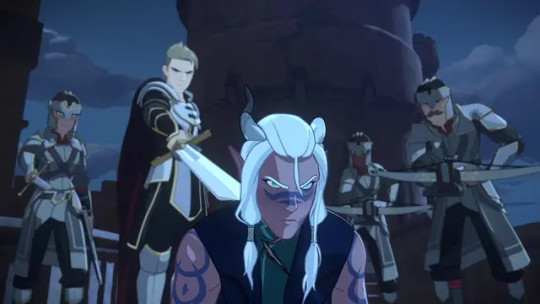
If Moonshadow elves have true horns, Runaan should have been bleeding heavily for a few minutes from how low that horn was broken (though likely not enough to do him serious harm from blood loss, he'd just feel a bit iron deficient for a few days. Horns tend to clot quickly when broken). We can assume they did not do this because of the kids' rating of season 1, even if the writers knew horns should bleed. He also likely felt a significant amount of pain, and probably has a nasty headache and possibly a concussion from having his head rattled that hard.
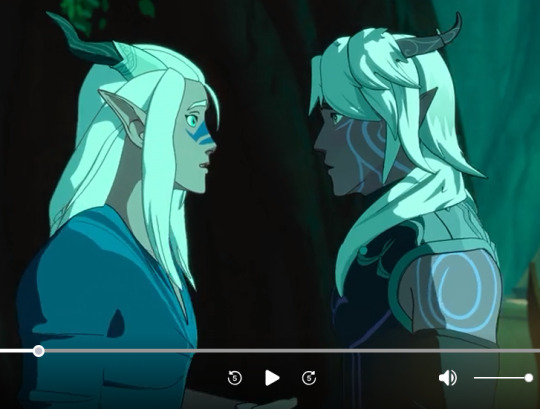
In contrast, even if his horn was carved to fit the caps he wears, Ethari probably wouldn't have really felt it (other than vibrations in his skull). However, horns can be trained to grow in certain configurations over time, and the caps might have been a training tool to ensure they grew into the desired curve, and then just left on as decoration or armor. Moonshadow elves seem fond of dual-purpose everything, so a metal cap that's training tool, decoration, and armor all at once is right up their alley.
(on the note of Moonshadow elves, also, it seems likely that the "wood grain" we see on their horns is also willful decoration, as the Moonshadow children we witness don't have that grain, and the interior of Runaan's broken horn lacks any evidence of it. As we can see in this shot with Ruthari, the patterns also aren't of the same style from elf to elf, but the grain on Runaan's horns is mostly lines like his tattoos, and Ethari's horns and tattoos both feature delicate swirls.)
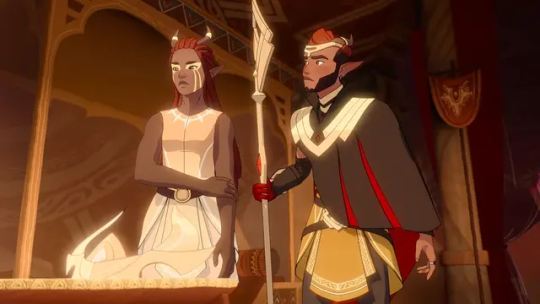
Sunfire elves definitely have horns, though they are intriguing as it seems there's not a very strong delineation between skin and horn. However, that could also just be art style, as there's plenty of horned animals that have fur or skin roughly the same color as the base of the horn around the base of it. This includes some pronghorns, which you'll remember are the neat antelope that sheds the keratin layer on their horns and regrows it but keeps the bony core, and antelope. We've pretty much covered how their horns would work with the Moonshadow elves, as they're pretty similar, though Sunfire elves' horns are smaller and their vulnerable zones would be as well, though they're also thinner and likely more vulnerable to breakage (hence, I imagine, all the armoring on them).
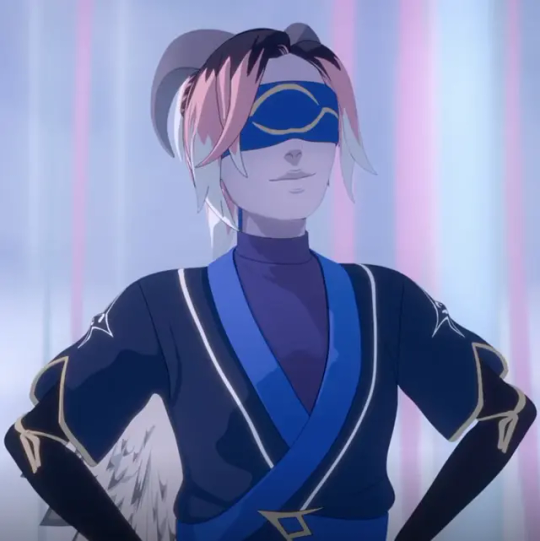
Skywing elves are an interesting conundrum though, because unlike Moonshadow and Sunfire elves, they have a quite varied set of horn styles. Astrid seems to have a fairly basic goat horn curve (as does Kosmo).
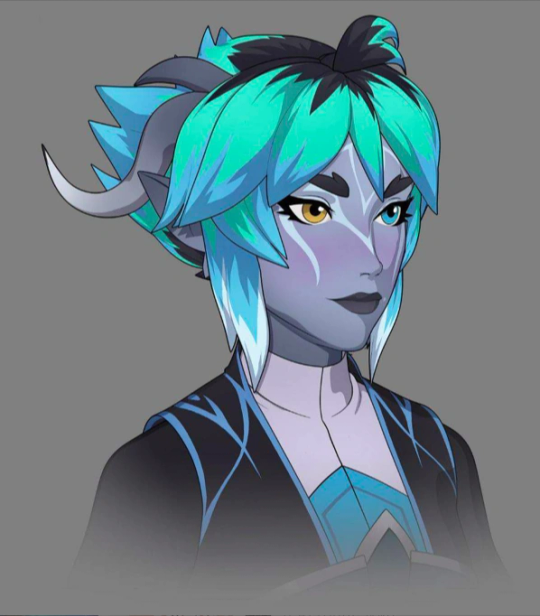
Nyx's horns curve so sharply that from many angles she appears to have two sets, but in her concept art we can see that she just has a secondary branch at the very base of her horns, which is reflected in Hendyr (the Skywing Dragonguard) as well. And all of these people are among the 20% of Skywing who have wings, so it's not genetically linked to that trait. The lobed pattern of Nyx and Hendyr's horns appears to be more standard, with most unnamed Skywing also having horns that are layered to look like feathers. The Elder is like this as well.
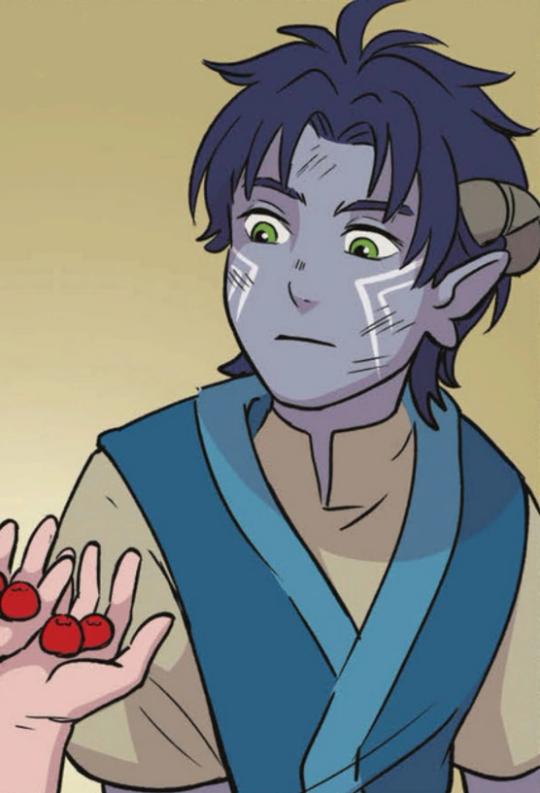
Suroh, the little Skywing boy Rayla meets in Bloodmoon Huntress, however, has goat horns like Astrid - except placed lower on his head, and having ridges that hers do not.
So far though, all of the Skywing seem to have some common traits: their horns are relatively short, and curl close to their heads, having ridges or lobes that mimic feathers. All of them resemble various types of goats, all are definitely horns.
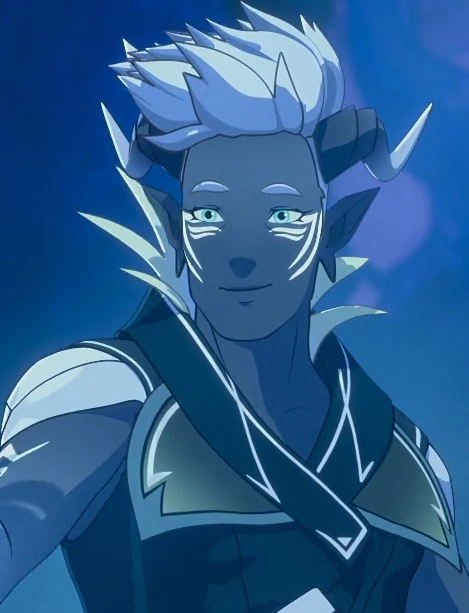
I dunno what the fuck was wrong with this guy, why does he have dragon horns when none of the others do, what makes him special?
Everything. Everything makes Ibis special. I miss him so much.
*coughs* anyway, Skywing elves likely have a fairly strong culture of training their horns to grow in specific directions, based on the variance in how they curl. Also, if Astrid's horns continued to curl in that direction they would absolutely eventually stab her if they hadn't stopped growing or been trained to grow that far from her head. Imagine if she had the tight curl we see with Suroh but with her horn placement.
Now we get to the Earthblood, where things get more interesting.
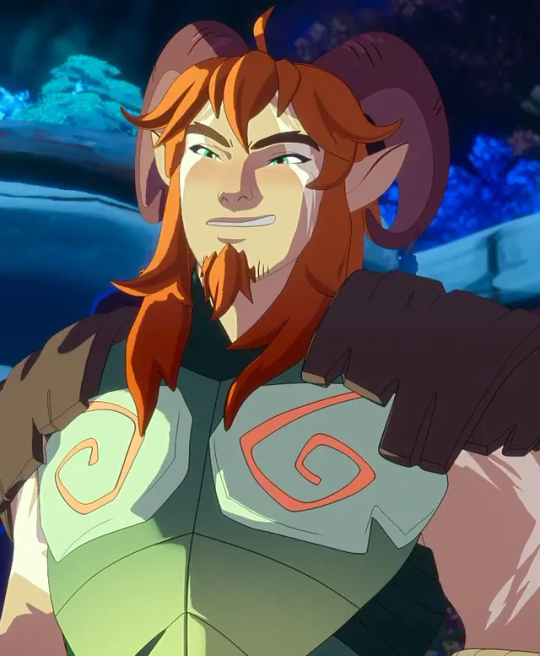
Those are definitely goat horns, and not even decorative mimicry like Astrid's, just straight up bighorn ram. Simple. Case closed, right?
Nah.
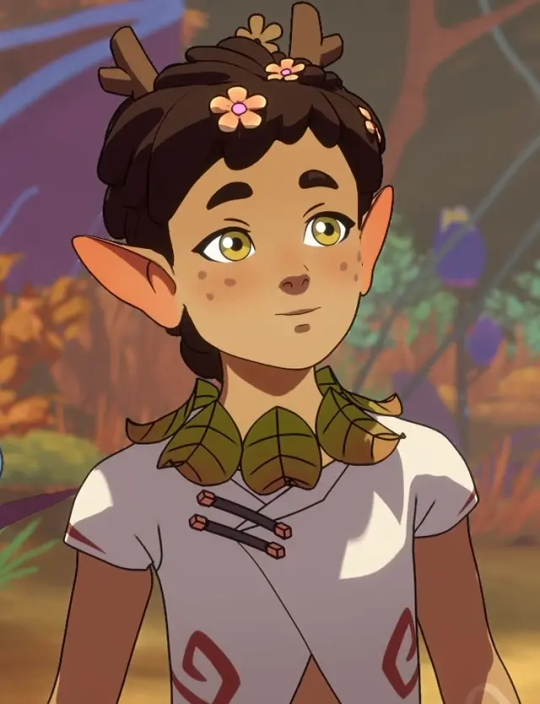
Because this little kid is an Earthblood from the same community, who clearly seems to have branching going on in his head ornamentation already, which is generally a trait of antlers. (Though, there's those pronghorns again.) Unfortunately, we don't really see enough to confirm whether they're antlers or horns, but let's just assume antlers for the fun lore of it all. Earthblood elves start growing them at a much younger life stage than most antlered animals. It also makes sense why Earthblood elves seem to keep shorter hair than many other elves - the antlered ones have fucking velvet to worry about. Can you imagine getting dead, bloody skin out of your hair??

What's interesting is that Terry's horns do not have the branching I would expect from antlers. As a matter of fact, his horns are virtually indistinguishable from a Moonshadow elf's, though he doesn't have the purple wood grain effect we're used to seeing with them (again, my guess is that that's painted on anyway). So based on Terry alone, I would actually say he also just has horns, and N'than and Earthblood Callum (and the elves that indulge Earthblood Callum as a trope) being the only indication they sometimes have antlers.
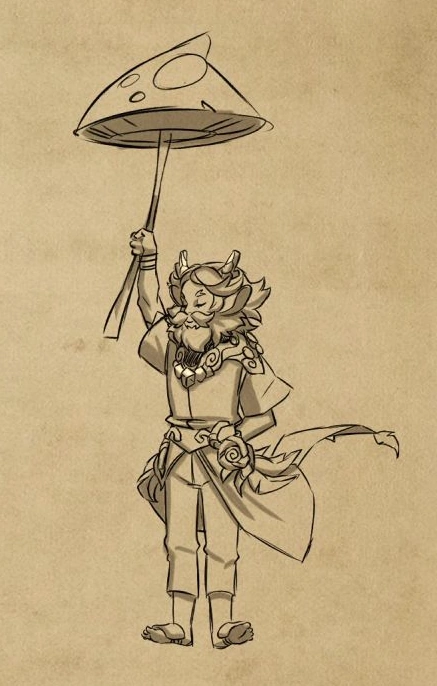
oh but then, then we get into some Really Interesting stuff with Mukho. Look at that. Do those look like antlers? They do seem to have branching, but they also have what appears to be flat plates. I would actually hazard a guess that Mukho is one of the Earthblood we heard about back in the day, with horns of crystal or stone rather than antlers or goat horns. That one, I don't really know how to make work biologically, which is why I didn't give a rundown for it up top. This one's just magic.
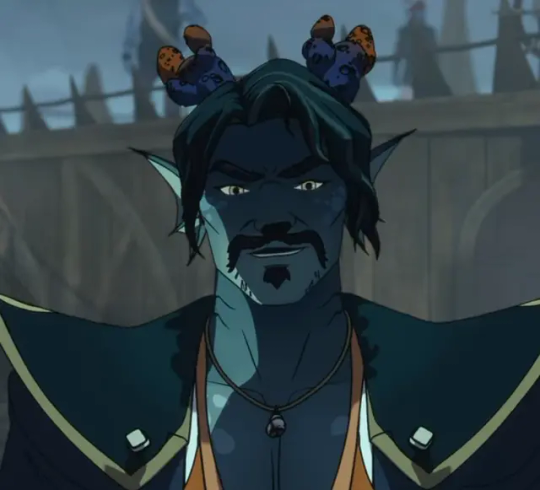
The Tidebound also have some interesting shit going on, though. Finnegrin here has coral on his head, and if you remember, coral has basic nerves throughout its body but scientists debate whether it can feel pain as we understand it. My guess would be that Finnegrin and other Tidebound like him can register touch to their horns in a way that Rayla wouldn't be able to feel at the tips of hers, and an antlered Earthblood wouldn't feel unless in velvet, but he wouldn't necessarily feel pain at one of them being broken. He'd just be aware of it.
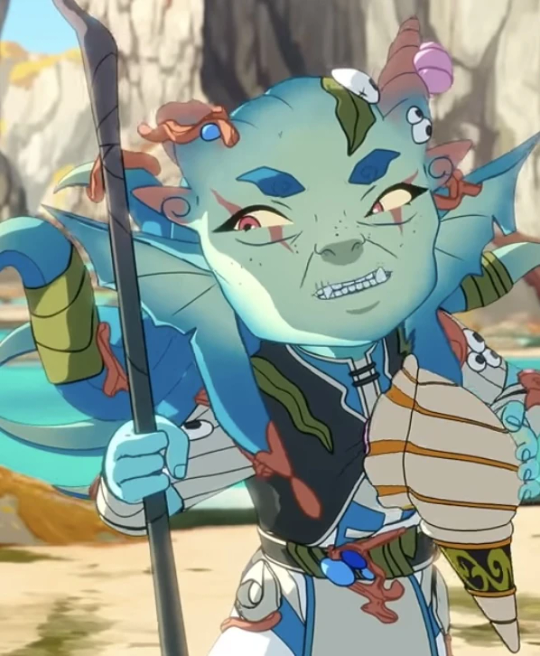
Akiyu would feel her "horns" even less, with shells being made of basic proteins and minerals and not, strictly speaking, having nerves or live tissue at all.
So! Elves have wildly varying cranial ornamentation and there's some Science about it!
Also, to veer into conjecture a bit, it's worth noting that while Moonshadow and Sunfire horns are constructed similarly, they're likely for very different evolutionary purposes. Moonshadow horns are larger, yes, but are heavily angled towards their back, indicating use either ramming with the length or base (as we see with goat horns) or defense against attacks from behind. Sunfire elf horns are smaller but often angled much more upright, indicating more ability to use them as stabbing weapons.
#the dragon prince#tdp lore#science#SCIENCE!!!#fandom science#tdp headcanons#tdp elves#moonshadow elves#sunfire elves#earthblood elves#tidebound elves#skywing elves#tdp runaan#tdp ethari#tdp janai#tdp karim#tdp astrid#tdp nyx#tdp suroh#tdp ibis#tdp n'than#tdp warlon#tdp terry#tdp mukho#tdp finnegrin#tdp akiyu
37 notes
·
View notes
Text
Phineas and Ferb fascinates me from a structural standpoint. I'll admit I haven't watched the show front to back, but I've caught the odd episode here and there and I certainly get the gist of it.
The first time I saw P&F it seemed charming but unremarkable, the second and probably third time it became obvious that it was a clever but formulaic show. At some point it clicked. Children's shows are usually formulaic, Dee Dee will destroy Dexter's invention, Elmer Fudd will fail to hunt the Wabbit, He-Man will defeat Skeletor, and Sisyphus will roll that boulder up that hill. Phineas and Ferb asks not just that we imagine Sisyphus happy, but that we imagine that he is ecstatic to see that boulder roll down the hill.
Where the status quo is an unspoken rule of older cartoons it is the explicit law of the P&F universe. There is a roadmap to every episode, you probably already know it but I will spell it out regardless. Phineas will say the phrase "I know what we're gonna do today" thus kicking off their project for the episode. Candace will try and fail to get them "busted". There will be a musical number. Meanwhile Doofenshmirtz will have made an -inator that Perry will be called upon to destroy. Perry will get caught, Doofenshmirtz will explain his plan, Perry will escape, destroy the -inator and the ensuing chaos will clean up Phineas and Ferb's backyard shenanigans just in time for their mom to get home. Ferb says something at the very end, often his only line in the whole episode. The end.
There are stock lines that must be said. "I know what we're gonna do today" "I wonder where Perry is" "Busted" "🎵Doofenshmirtz Evil Incorporated🎶". The show doesn't just have a cartoon status quo, the universe operates off of the laws of cartoon status quo to the extent that characters actively notice when the cycle doesn't complete correctly. The characters seemingly know that their world operates on cartoon physics, but to them it's just physics. In P&F a giant whirlwind carrying away a giant backyard amusement park is as natural as gravity.
Candace's place as the character who knows this is all insane must be a tortuous existence considering the whole world is conspired against her. Not out of a cosmic meanness but a deep thematic kindness. Candace is the only character whose intent is to cause purposeful harm and the universe will not let her get away with it.
Truly this is one of the most unerringly kind shows I've ever seen. It is unreal how much faith it puts into wordplay, running jokes, and raw absurdity to carry itself while never stepping into the realm of cartoon cruelty.
You know cartoon cruelty. It's why Tom gets punished for Jerry's actions and why the Trix rabbit can never eat his own damn cereal. At its best cartoon cruelty manifests as Ed, Edd n Eddy or the Looney Tunes short Duck Amok where there is catharsis in seeing the characters hoisted by their own petard. At its worst you get CatDog which is so intensely cruel to the character of Cat that I can't comprehend what the writers were going for.
The confident lack of irony is part of what makes Phineas And Ferb work. The show is a parade of cartoon cliches and dad jokes and it never it never winks at the viewer or lampshades how silly this is. It just has absolute faith that the corniest jokes ever really are that funny. And so they are. I actually laugh out loud every time they do the "Aren't you a little young for this?" "Yes, yes I am" bit. Maybe it's the delivery, maybe it's just the confidence in the bit. Probably a bit of both. I am smiling to myself just thinking of this dumb running joke.
But what this all amounts to is what every bit of fandom wankery amounts to. I am of course talking about shipping. For my money the best bit in the show is the romantic framing of Doofenshmirtz and Perry's rivalry. This is where the show's cartoon logic and unrepentant kindness synthesize perfectly. The homoerotic undertones of the spy/supervillain dynamic are an extremely tired observation and are usually only emphasized in an ironic sense to poke fun at pieces that never intended the gay subtext. P&F flips this joke by not being even a little bit ironic about it, but still adhering to the unspoken nature of the gag.
The end result is that Perry and Doofenshmirtz's status as a romantic couple is tacitly understood to be part of the shows status quo, but never commented on. The world of P&F is too inherently kind to be homophobic (homophobia being a key component of the joke) but it still has a joke shaped hole to fill. So it does the funniest possible thing and fills the hole with nothing. The joke is the lack of a joke. The expectation of a joke that is met with a shrug from the show's own internal logic. And that's really funny. An evil scientist and a platypus are in a loving relationship that happens to also be a hero/villain rivalry. Don't worry about it. It's not the weirdest thing happening in the tri state area I promise.
#phineas and ferb#Analysis#deep fucking analysis of Phineas and Ferb#i wrote this in a fugue state while unable to get to sleep last night and i just remembered about it#so now i gotta edit and format my fatigued ranblings about children's cartoons
58 notes
·
View notes
Note
Hi,
I saw your post about barrel bugs and I wanted to ask if you know more interesting marine parasites?
(Personally I think that dendrogasters are quite cool)
Dendrogasters are pretty cool! I don't know much about them but they look really... odd.
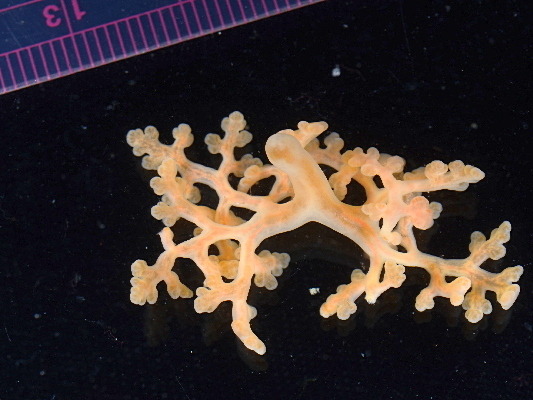
ID: a picture of Dendrogaster showing its unsual body plan, with its branching structures that end in spherical growths. It is light yellow to orange in colour. It is set against a black background and part of a ruler can be seen.
There's a whole host (haha) of interesting marine parasites, and I won't go through all of them now but here's a few that you might like.
Rhizocephala are a parasitic group of barnacles that live on crabs. They have no internal organs except gonads, a few muscles and the remnants of a nervous system. In fact, their only distinguishable bodyy structure is the female reproductive organs, which sit outside of its host's body. Here's a really cool drawing of the filaments which it sends out into its host's body to absorb nutrients directly from their blood:

ID: a black and white drawing of a crab infected with the parasite Rhizocephala. It shows the underside of the crab with the externa (female gonads) visible and a network of filaments that the parasite has grown throughout the host body.
I'm sure you've heard of tongue lice, so I won't labour the point too much, but spark notes is that they attach to the gill arches or tongue of a fish, then cut off the circulation to the tongue so that it withers off. It then replaces the fish's tongue.
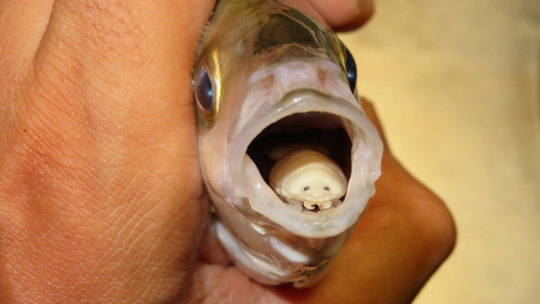
ID: an image of a tongue eating louse inside a fish's mouth. The louse is pale, almost white in colour and has two black eyes. The fish is like :O
Finally, this isn't a marine parasite but you'll see why I include it in a second, but the tongue worms (not to be confused with the tongue eating louse). They are actually terrestrial and mostly infect the respiratory tracts of vertebrates (sometimes, though very rarely, us). What I find interesting is that they have no circulatory, excretory or respiratory organs and rely soley on the host to do all these things. Isn't that cool?

ID: a drawing of a tongue worm (Pentastomida). It has a segmented body that ends in a point. At the other end there are 4 stubby limb-like structures.
If you're still reading , you might be wondering why I picked these ones and why the tongue worm is awkwardly shoved in there? Because @chowaniec I have tricked you; this is not a post about marine parasites, it's a post about the diversity of crustaceans. THAT'S RIGHT, ALL OF THESE ANIMALS, WITH THEIR WEIRD LIFE CYCLES AND UNCRUSTACEANY BODIES ARE COUSINS OF CRABS AND SHRIMP AND LOBSTERS. AND THAT INCLUDES YOUR ORIGINAL SUBMISSION OF DENDROGASTER, WHICH IS WHAT GAVE ME THIS IDEA IN THE FIRST PLACE.
All of these lil guys just have highly specialised bodies that have lost many of the features we associate with crustaceans so that they can be better parasites. It's really only though careful analysis of their lifecycles and genetics that we can even determine them to be crustaceans at all.
I wanted to showcase the immense diversity of crustaceans and the weird and wonderful flexiblity of evolution. I also wanted to show you why morphological criteria for classification fall short, even beyond the "coconuts are mammals" meme.
Thanks for the submission, and thanks for being patient with me! I know this one took a little while longer to receive but I hope it was worth it.
#crustacea are technically not a monophyletic group#it's a really complicated thing but it's also constantly shifting#at any rate these critters don't care#they're just gonna keep evolving to do weird and wonderful things#marine biology#parasites
80 notes
·
View notes
Text
Rain world; Black Hole Sun AU
YAY IM FINALLY POSTIN THE LORE!!!!!!
warning, this AU contains: VIOLENCE, CULT THEMES, ABANDONMENT/NEGLECT, AND.. LOTS OF NEGATIVE THEMES- HBDJBNFHDVH
Everything had started whenever a small group of ancients suddenly felt a fascination, and connection to the sun and moon. They began believing that they were other gods, in some way. This group began to praise them, and soon started a cult. This cult grew, and these people were named the "celestiasts" They would create symbols, representing the sun and moon.


(The left one is the sun, and the right one is the moon.)
the celestiasts would wear accessories relating to the cult, to show that they were apart of it. This was pretty much required in the cult.




Iterators would also become celestiasts, and worship the sun and moon along with the ancients. (Chasing wind was actually one of them :3c)
and one day, the ancients created two iterators, siblings, as vessels for the spirits of the gods, so they could contact them easier. Before powering them fully, they'd do rituals around the two iterators, in hopes their plan would work. (It likely did not work, but the ancients never found out)
These two iterators were Looks to the Moon, and Seven Red Suns.


They were created with differences from other iterators. That being that they were taller, had claws, red pupils, and horns.

they were both very confused at first, however soon accepted the worship and praise. They were seen as gods across the land. the ancients soon ascending, Suns was confused, but moon didn't question it. Soon, they were all gone.
(Also, a while after the ancients ascended, some iterators found ways to be off of the rig. Examples being Pebbles, and Moon)
Moon began being more distant to Suns after the ancients were gone, without reason, and closer to the rest or the local group. Moon eventually got very close to five pebbles. And even called him her brother outloud to the local group.
Suns was stalking the conversation, and saw that message, and became very upset. They felt abandoned, and replaced. And just to make things worse!!!; the rest of the local group began ignoring suns as well. Suns being left behind now completely. NSH felt like doing this was wrong and asked everyone if they should contact them, but everyone seemed to think they were fine, and didn't need the attention. NSH hesitated, but agreed. still not feeling so sure about all of this. Cycles pass, Suns having not spoken to anyone in a very long time. They began losing it a little, and going off the deep end, due to being alone. During this, he started trying to create slugcats, maybe to help him cope?? eventually succeeding, making spearmaster. They were a bit of a comfort... but one day a bad episode hit Suns. They seemed insane, almost. spearmaster was trying to comfort Suns, but their efforts didn't work, and just annoyed him. Eventually he snapped. And in a thoughtless breakdown, they sewed spearmasters mouth shut with one of its own spears. Afterwards, spearmaster ran away, and after a while they accidentally stumbled upon NSH's structure. NSH was basically like "oh shit" and took spearmaster in.
(Slugcat messengers created by iterators will have the symbol of the iterator on their hand.)
So, NSH saw the symbol, and their worry only increased. They shared a picture of the poor thing to the local group, and everyone else seeing that Suns created them, all went alert. That only caused people to avoid Suns even more....
After a while, NSH decided to take their VERY LONG scarf, and rip pieces off, giving it to hunter and spearmaster as a headband, and bandana

One day. Suns was stalking the chats again, and noticed pebbles searching for ascension. Suns, in a bit of an episode, decided to... "prank" him a bit. He contacted him, and offered the gold pearl, like in the original lore. However, the pearl itself had instructions to create the rot. but pebbles believed Suns when they told him it was to break the taboo. So, Pebbles got the rot, and was like uhhh wtf??? He tried to contact Suns to ask why they did that, but there was no response. So, Pebbles got up and made their way to suns' chamber to force a response out of them. When Pebbles arrived, they noticed it was... quite dark in Suns' chamber. It was a bit off-putting, but Pebbles began asking him things anyway. He wasn't getting very clear answers out of Suns, and... eventually.. Suns got up, grabbing a spear, which- made Pebbles start panicking. But before he could think of what to do, Suns stabbed Pebbles straight through the eye, and through the back of his head. Pebbles was- obviously struggling to move away, and while trying to do so, Suns grabbed him by the antenna so he couldn't get away, and eventually snapping the antenna.
After a while, Pebbles managed to run away, still struggling alot...
Now looking like this.

(What happened caused his processor to get fucked up btw :3)
He ended up going to Moon's chamber and explaining everything. She was furious. And after Pebbles left, she sent out a message to the whole local group saying that Suns was dangerous and should not be trusted. NSH saw this and was... very alarmed, and the rest of the local group was scared...
After doing that, Moon went to Suns herself, and when she got there, oh wow!!! Suns wasn't in that manic episode anymore!!! Wow!!!! So he was thinking back on his decisions and asking himself why he did that... and then Moon shows up, pissed. He asks why she came there, and more importantly... why she abandoned them, but out of rage, she didn't answer. Instead, going up to suns and beginning to beat him with her bare hands, for hurting her "family."
Suns was- heartbroken. Completely. Just taking everything she did.
After she left, about a cycle later, I'd say... NSH calls him. Suns was worried because they were scared he'd be mad too, but- they weren't. NSH just- began making friendly conversation with Suns??? And the most confusing part is that NSH didn't seem to want an answer as to why he did anything either. This would continue for cycles. NSH calling Suns, and just being kind to them...
Eventually, Suns snapped at him. They asked him WHY they were being so nice and so forgiving. Suns didn't seem to think someone could actually care for them after all of this. They were confused, and upset. And told NSH how much they could hurt him, and torture him. But....
NSH stopped suns, saying
"Suns...
I am not scared of you."
And- Suns just went completely silent. Almost crying, not understanding why anyone would feel anything positive about them anymore. But... NSH seemed very genuine. So, Suns didn't cut contact with them. And they eventually became very good friends. NSH now being suns' only friend.

meanwhile, alot of iterators outside the local group also heard about what Suns did, and were... also mad. ESPECIALLY the celestiasts. Infact, they would go as far as to burn any flags with the symbol of the sun on them they saw, and spread the words "BURN THE FLAG OF THE SUN." But then, beginning to praise Moon more, spreading words "PRAISE THE FLAG OF THE MOON"
Suns would see those words.... and would be very very hurt by it, but accepting it.
Eventually excepting it a little too much... they began being fascinated by fire, and embracing the hate he would get. NSH would try their best to comfort Suns and help him, but he's too far gone now. Atleast they have a freind that keeps them tame sometimes?
THAT IS ALL THE MAIN LORE I HAVE RIGHT NOW—
I will say that sliver dying is still canon here. Here is her

I do have some side lore that isn't as important, but still canon. Sooooooooo
REWINDING.....
Chasing Wind is a researcher, and previous celestiast. They love learning, and performing experiments. As well as creating things

NSH was playing with creating slugcats, and eventually creating hunter. They shared images of them to the local group, being proud of em. And Wind specifically.. saw Hunter, and was fascinated by the idea of a messenger. NSH and wind began discussing it, since wind was interested. Eventually... success! Wind had created the Rivulet.
They now had a freind. yay!!


________
Pebbles and Innocence were also very close friends, they would chat alot, and also get in petty arguments- which Wind would then step in to stop
Wind and Pebbles know eachother have talked quite a bit, but Pebbles is closer to Innocence.

EVEN MOREEE in the past, a red slugcat would come to Pebbles' chamber and hung out there. She would do so alot, and Pebbles enjoyed the company... but, one day she left and never came back..
Where did she go? Well, while she was out one day, her and rivulet met. And rivulet was basically like "FREIND?????????" and took her back to wind. Wind then naming her the Artificer. Arti wasn't officially winds slugcat... but she'd see her sometimes because riv would bring her along sometimes.
(Feel free to ship riv and arti idc LOL same with nsh and suns, feel free to call them gay asf. I do too /silly)
I don't have a design for bhs arti so you don't get one :c
I'll make one in the future though! When I do I'll put it here.
(THANK YOU FOR READING!! :D)
#rw BHS#rain world#rw au#rain world au#alternate universe#rw iterator#slugcat#five pebbles#seven red suns#no significant harassment#looks to the moon#sliver of straw#unparalleled innocence#chasing wind#lore#ramblings#lore drop#au lore#rain world iterator#my art#rain world hunter#rain world spearmaster#rain world artificer#rain world rivulet
43 notes
·
View notes
Note
How would a c singer sew or do some other very precise job? can u show that?
To start, I think it's important to point out how they manipulate anything at all.
Cs don't have arms, we know this, but they do have overly complicated pseudomouths! The main manipulators that are part of it are the dark green patches at the corner of their mouth.

They work a lot like snail eyes, and their default position is retracted, but when they're in use they look like this!

It's almost entirely muscle, save for the chitin based "skeleton" in the hand for structure. While it is not very strong, it does the job, especially with precise tasks. There is one on each side, along with the pseudo-tongue within the pseudomouth (I will be saying pseudo a lot). When retracted, the whole thing tucks into special groves in the pseudomouth.

These indents serve a secondary purpose, also, and its allowing them to do THIS!!

This position is what lets them do precise work of all kinds! They need to use assistive devices for a lot of tasks, but for sewing specifically, they get by just fine without them.
Here's a visual example of how they would go about it, it's rough but I hope it gets the idea across.

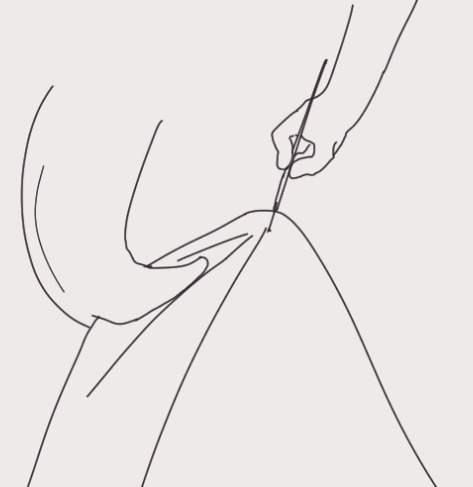

and then the cycle repeats!
I wanted to draw assistive devices but I have already taken longer than I would like to answer this ask, I might come back with some examples later down the line. Basically, they're mostly stuff attached to parts of the snout to hold the fabric more firmly, which is useful for more refined stitching or embroidery.
135 notes
·
View notes
Text
in their notes in the artbook, almost every staff member who worked on the Escaflowne film, regardless of their job title (concept artist, animator, sound designer, writer, etc.) said something along the lines of "I only wished I'd been able to do more, but what I did was something entirely new, and I gave it my all. I'm proud of that."
so i was researching the exact history of what made Sunrise fracture right after making Escaflowne and Cowboy Bebop (the truth will shock you: budget cuts and being underappreciated for making the sickest shit of all time) and stumbled onto this reaction to the Escaflowne film
(some context, if anyone doesn't know: the Escaflowne film gets a pretty bad rap generally)


i as a teen also watched the special features DVD and a lot of my understanding of Escaflowne comes from this and other notes from the people who worked on it, as well as just returning to it multiple times and learning as i go... through it and through life. Escaflowne is a phenomenon eager to reward your return.
so i'm really, truly, madly, deeply glad this person sought out the commentary in order to confirm this and shift their thinking. i don't think it's pretentious of me to say i find it worrisome that this confirmation wasn't for them more evident in, or at least suggested by, the art itself. i'm an artist and i appreciate art, whether it's something i enjoy or something i dislike, i like both knowing about it and knowing about my own response to it. i've watched and read a lot of things and Escaflowne stands out starkly for what it sought to accomplish and the methods with which it did so. by comparison to all the bullshit TV shows before and after it, it is objectively remarkable in its efforts. people remember Vampire Hunter D: Bloodlust, which came out around the same time, and for good reason— beautiful, weird visuals and a deeply romantic, tragic story. people remember the Cowboy Bebop movie for its wonderful choreography. outside of shipping, the most positive things ever said about Escaflowne is in regards to its soundtrack.
i wasn't a teenage girl in the way Akane means (deeply chronically transgender) but for where i was in life, for what i personally had experienced, i did need this story. i was only 13— not 15, not 20, and it hit me hard, changing my focus in art and storytelling. Escaflowne the series has a really particular structure to the pacing of its emotional beats, tonal shifts, and scene changes, something i've flagrantly learned from. the film is a different type of art piece from the show, and it's very frustrating the way its purpose is overlooked, panned, by much of its audience. there's this idea that it's some huge departure from the show.
to enough people, it's inconceivable that a girl who in one moment is unaware of her own feelings and chases the unattainable rather than slow down to appreciate the attainable, would in another moment become a girl who feels lost and powerless except through brief moments of hurt, for which she feels an awful guilt. it's inconceivable that in one moment, a man who found only torture and cruelty in the traditions of his homeland, and was positioned as an acceptable sacrifice to that homeland, wanting to spare his young brother the pain of this cycle, would in another moment go down a path of impenetrable bleakness and destruction with the singular hope of ending it forever. it's somehow inconceivable that an orphan boy standing where the shadow of his brother isn't, who is told his worth is to be found through killing and revenge, would in one moment lose his innocence to that struggle, and in another, crave only death to escape it.
it's so validating to hear that Escaflowne was crafted with the idea of it being returned to repeatedly over time as we evolve through time— just like how Hitomi returns repeatedly over time. it is self-aware and it is aware of you.
the weight of Hitomi's depression, the "darkness" that is emphasised but was always present in the series, and what Nobuteru Yuki said about the film being just about Hitomi, Van, and Folken... of the things this person is/was wrong about, though, the "loss of romance" stands out to me. the romance isn't lost at all. the romance is present even when sadness and despair and violence are brought to the forefront— it's actually imperative that it be there. how is it that you can no longer recognise that small source of light when the circumstances around it seem darker? how does it not then glow more brightly? the romance is being done in exactly the same way as the series— as a deep current unknown but increasing in volume and intensity over time, keeping the characters alive. saving their lives. but maybe calling it "romance" is the real issue. maybe we should just be calling it love.
Escaflowne the film allows the audience to live in the world a bit more; environments are seen and inhabited in 360°, creating more of a relationship between you and that world. Escaflowne the series isn't an environmentally, physically immersive story. You don't create a mish-mash setting— relegated to a backdrop— like this if you want it to be physically immersive. there's very little emphasis or lore within the bounds of the show about the world of Gaea other than its turmoil. Escaflowne is an emotionally immersive story. it wants to tell you about its characters, their motivations, their actions, their feelings. maybe it's too easy to get tricked into thinking "forced to feel an emotion" means it's a young/immature work, whereas Cowboy Bebop's bitterness and discomfort with letting sadness linger means it's more mature.
Escaflowne is— among many other things— a romance in a very classical sense, a story about (in this instance, two) people falling in love. it can only build that romance by contrasting it with conflict. the conflicts, like the quiet and calm moments, like the violence, death, trauma, works to establish how much the trust and care between them matters. LOOK WITH YOUR EYES. THERE'S GRAPHIC, GRUESOME SLAUGHTER IN THE SHOW. THERE ARE UNCOMFORTABLE FEELINGS LEFT TO HANG IN THE AIR WITHOUT CLOSURE. the only things that are darker are the states Van, Hitomi, and Folken are in— but its optimism, its defiant hope, is as fragile as it always was.
speaking of romance, i also think Escaflowne is seriously critiquing related concepts— Romanticism and romanticising.
that you can stare (i hope?) at a piece of art for over an hour, a film which looks and sounds like how that one does, and not see, or at the very least guess at, whatever the intense, coherent reasoning behind it might be... it's hard to believe. even if you don't understand it, you might still be able to sit with it and understand enough to know there's something you don't understand. oohhhhhh my head. alright. that's the best i can do.
#escaflowne#i was gonna React More and write something of substance but i can't. you've heard it all before.#who cares.
21 notes
·
View notes
Note
Id love to become a hot Asian bodybuilder. if its not too much trouble?
Mate, that's a no-brainer. I have a pretty cool preset that I'll send you.
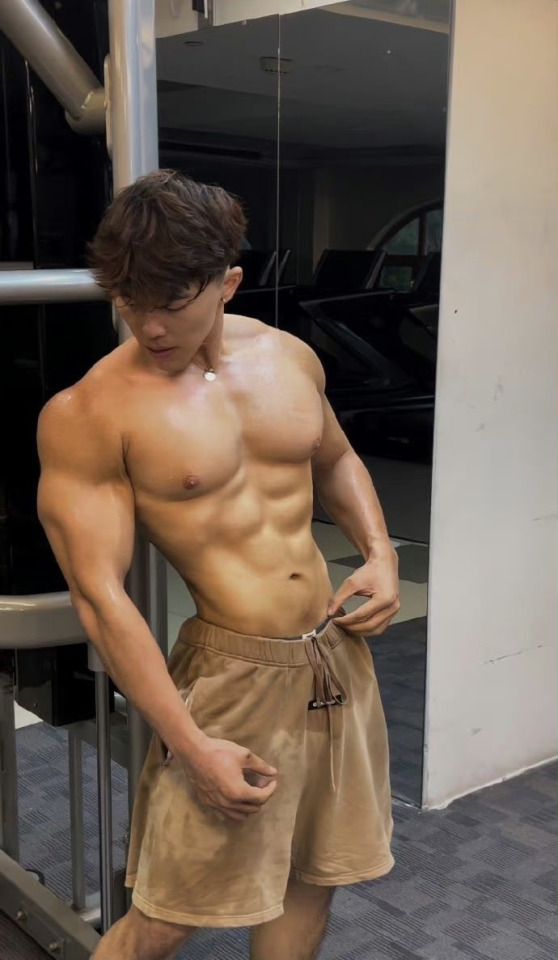
Yeah, that's smoking hot, isn't it? I think you can be very happy with it. If you want to make some adjustments, you can adjust the attributes in the "Active Preset" menu item.
Yes, you are satisfied. You can hardly get enough of your reflection. But somehow you are jealous of the big lads in the gym. So you reach for the Chronivac and set the muscle mass to "Like the biggest lad in the gym". And "Less fluffy" for hairstyle. And "More body hair".

An Asian hunk, as it is written in the book. A few side effects are already showing. You start to smell like sweat and musk. And your cock is also the biggest in the room. Fuck yeah, we're getting close…. You go to Mindset and change it to "Addicted to the Gym". Your head empties. And for that you know everything about nutrition and training cycles. About the right supplements. And about the winners of the big tournaments of the last 20 years. Your hairstyle is self-cut. Visits to the hairdresser only cost unnecessarily precious training time. And tops are only worn by losers who can't afford to show off their upper body.
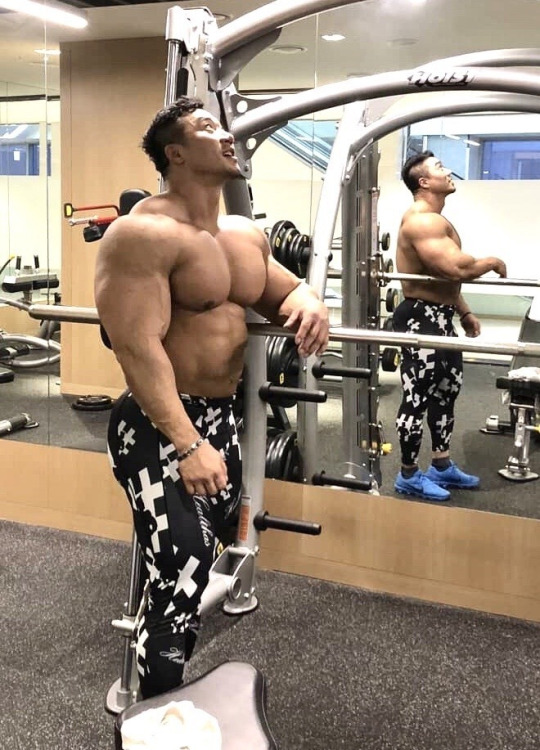
Your Korean has already become very simple in structure. But your foreign language skills are even worse. You start to have problems with the menu navigation. With muscles you enter "big much much big". Your muscles swell. You start having problems washing all over your body. You smell like a locker room. And you are as dumb as toast. But you are much much big.
You need to go to the bathroom urgently. Shit and fart. The problem because you eat all the time. You take off your pants and see the reflection of your back in the all-round mirrored anteroom of the toilets. You let your pants down. Shit, you have legs like a beanpole, you think. Where is the Chronivac? And how does this damn thing work again? You can no longer cope with the menu in the foreign language. You're so angry, Hulk would turn green now. But you are bigger than Hulk. And you crush your cell phone.
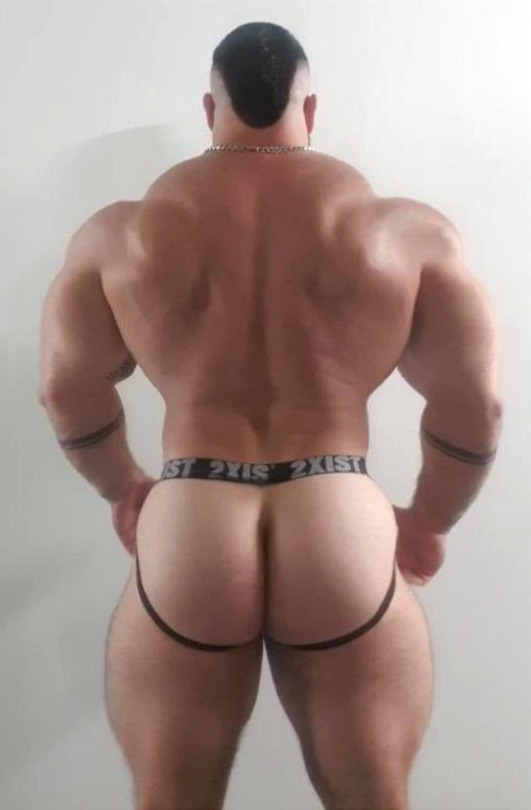
The supervisor must point out to you that you have forgotten your pants. Hehehe. This happens to you more often. But you are much, much bigger! Enjoy it!
223 notes
·
View notes